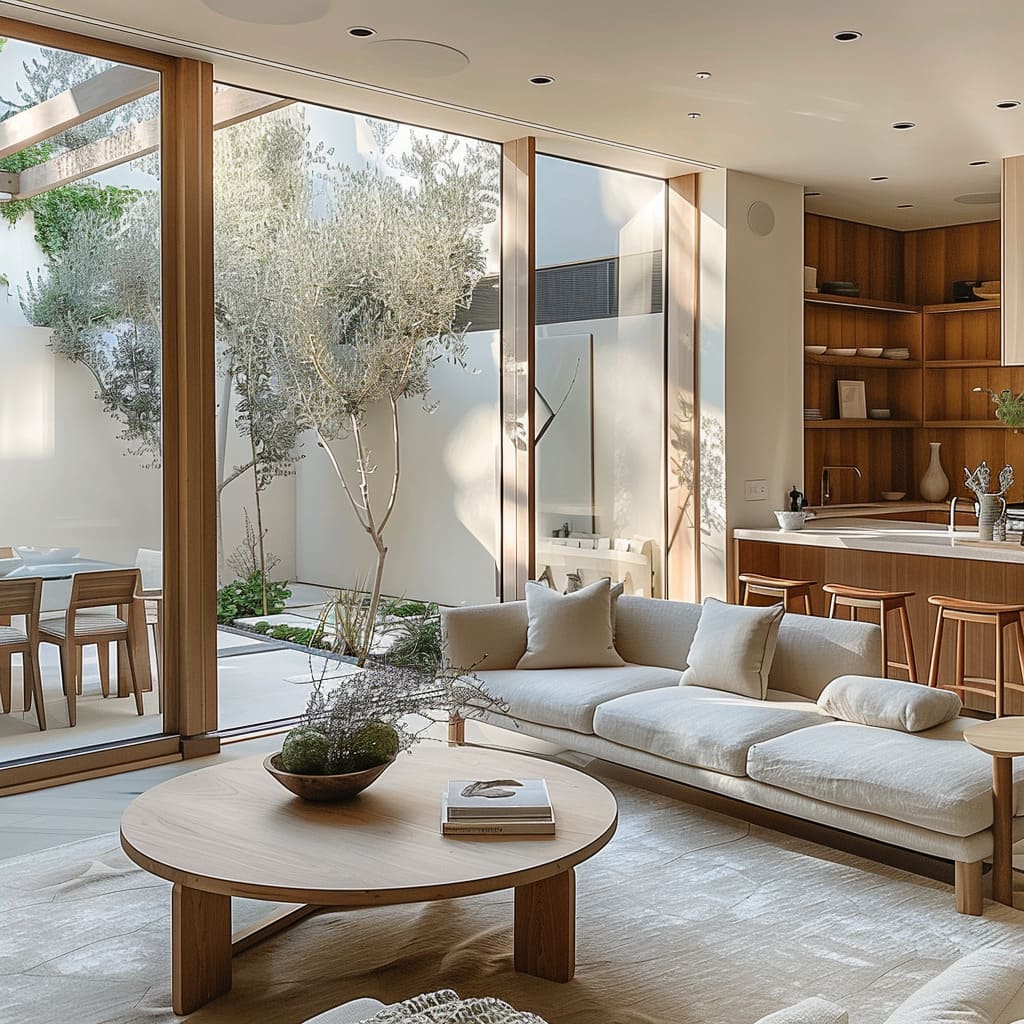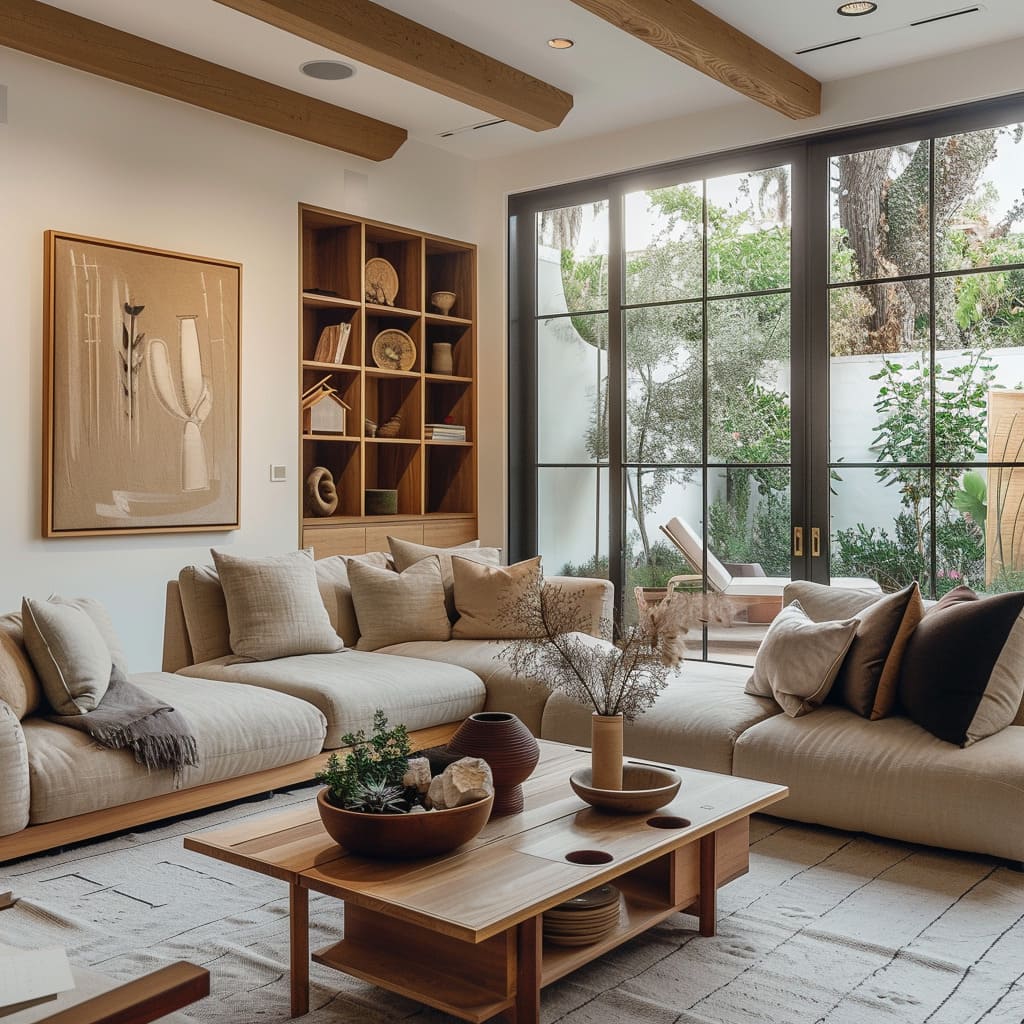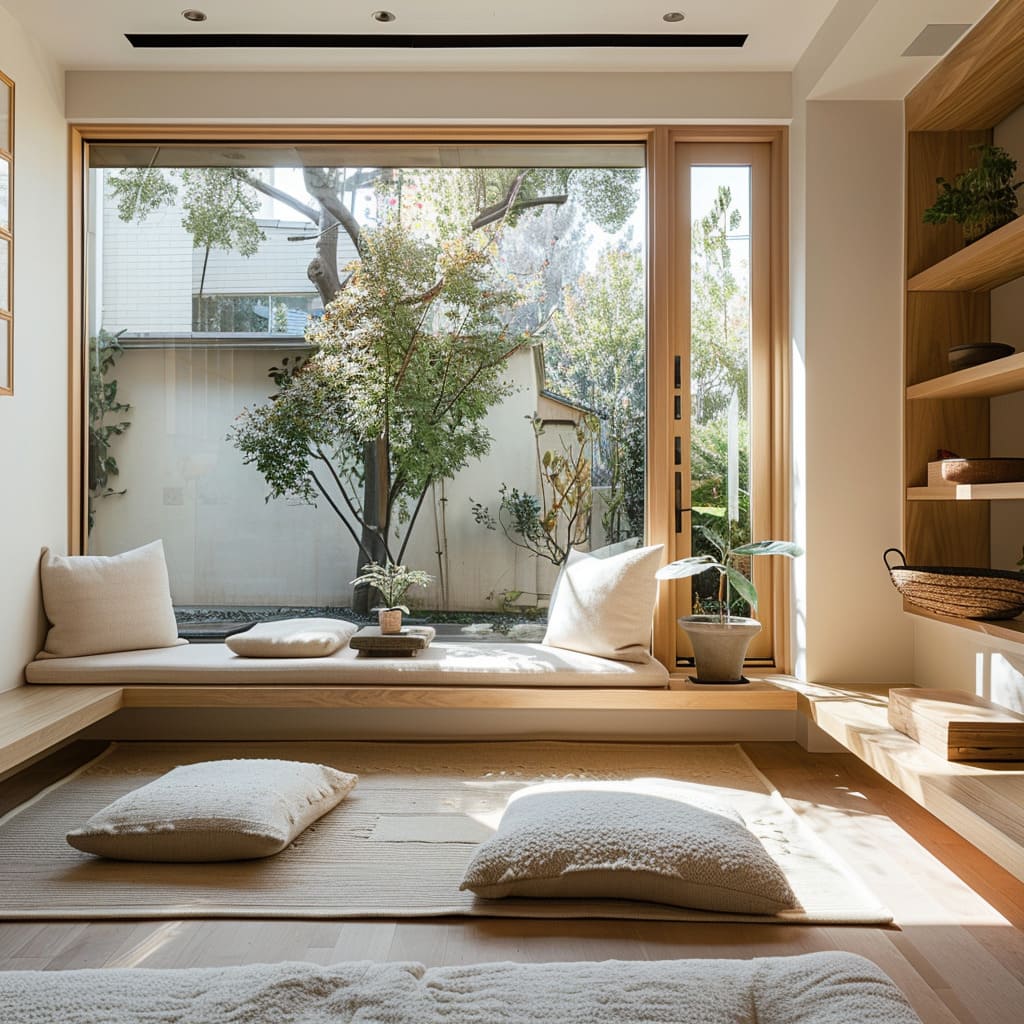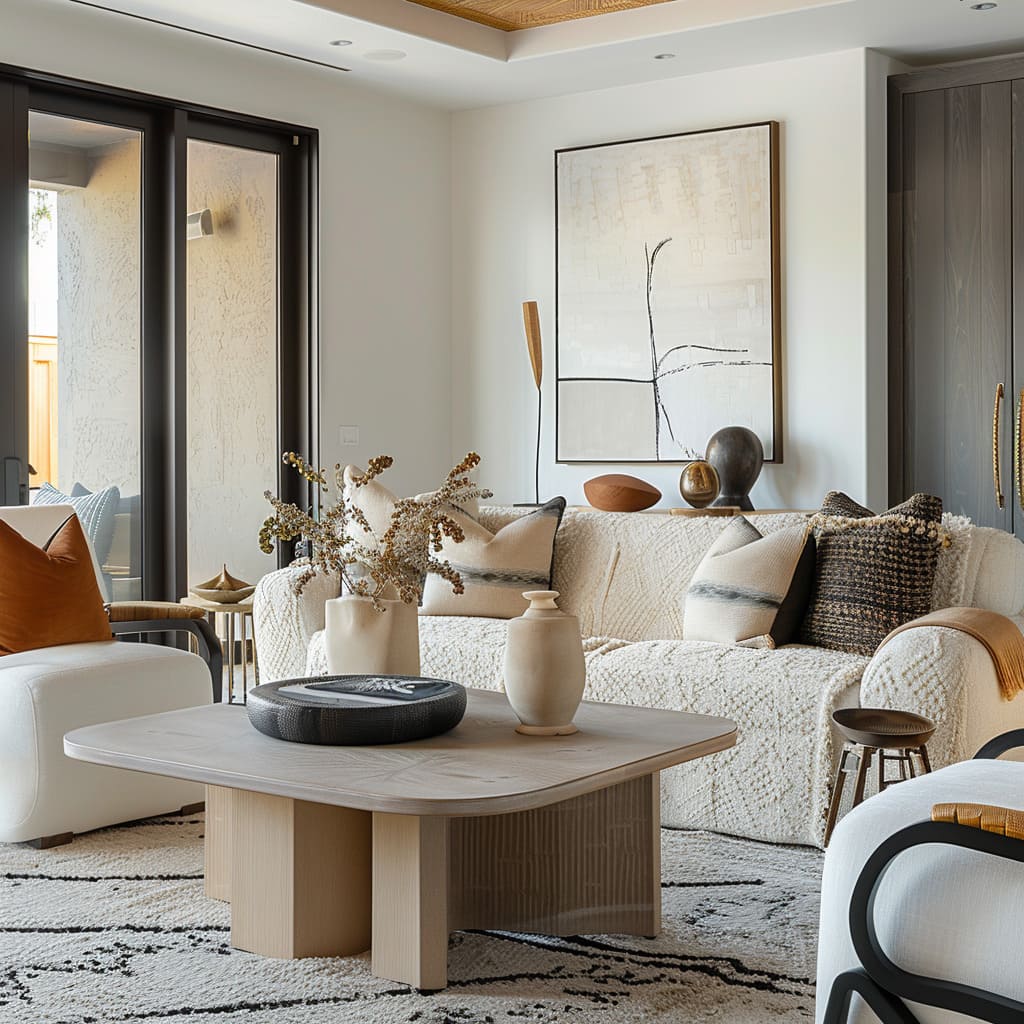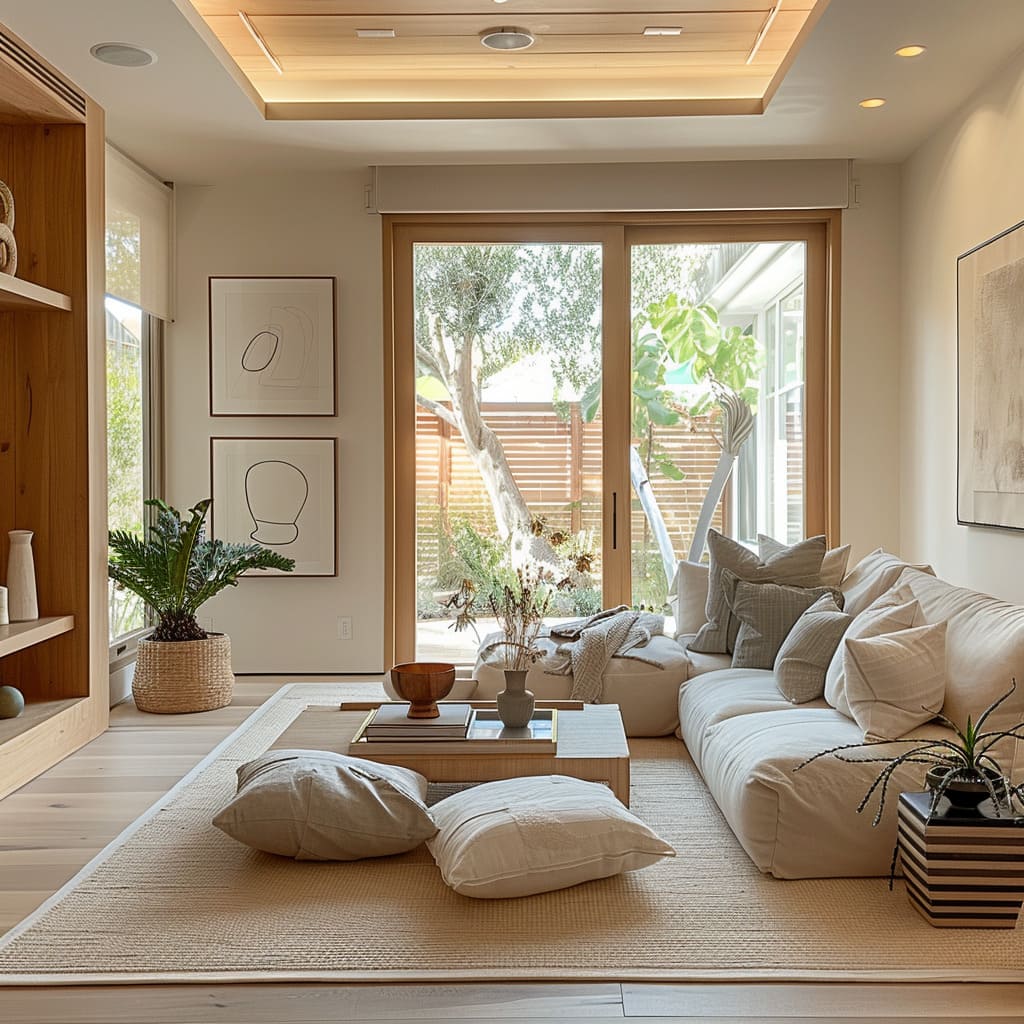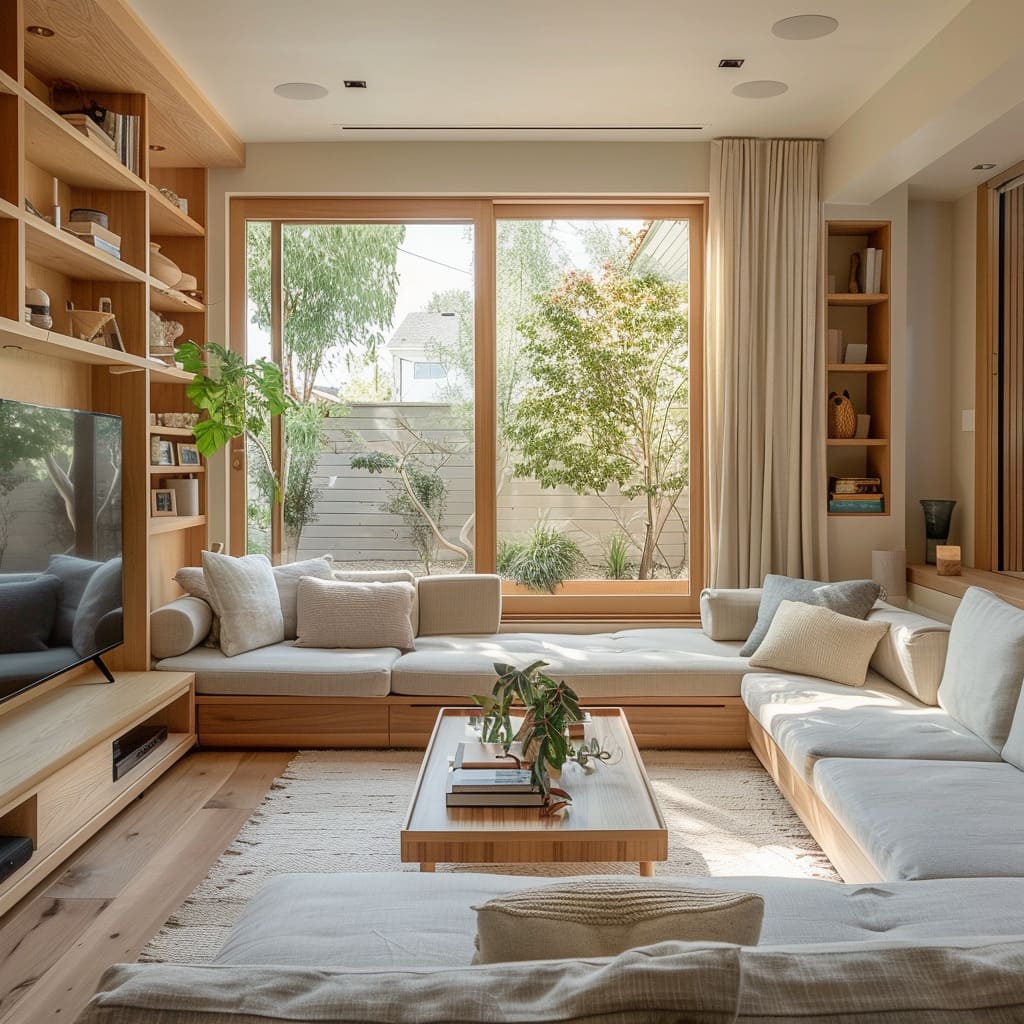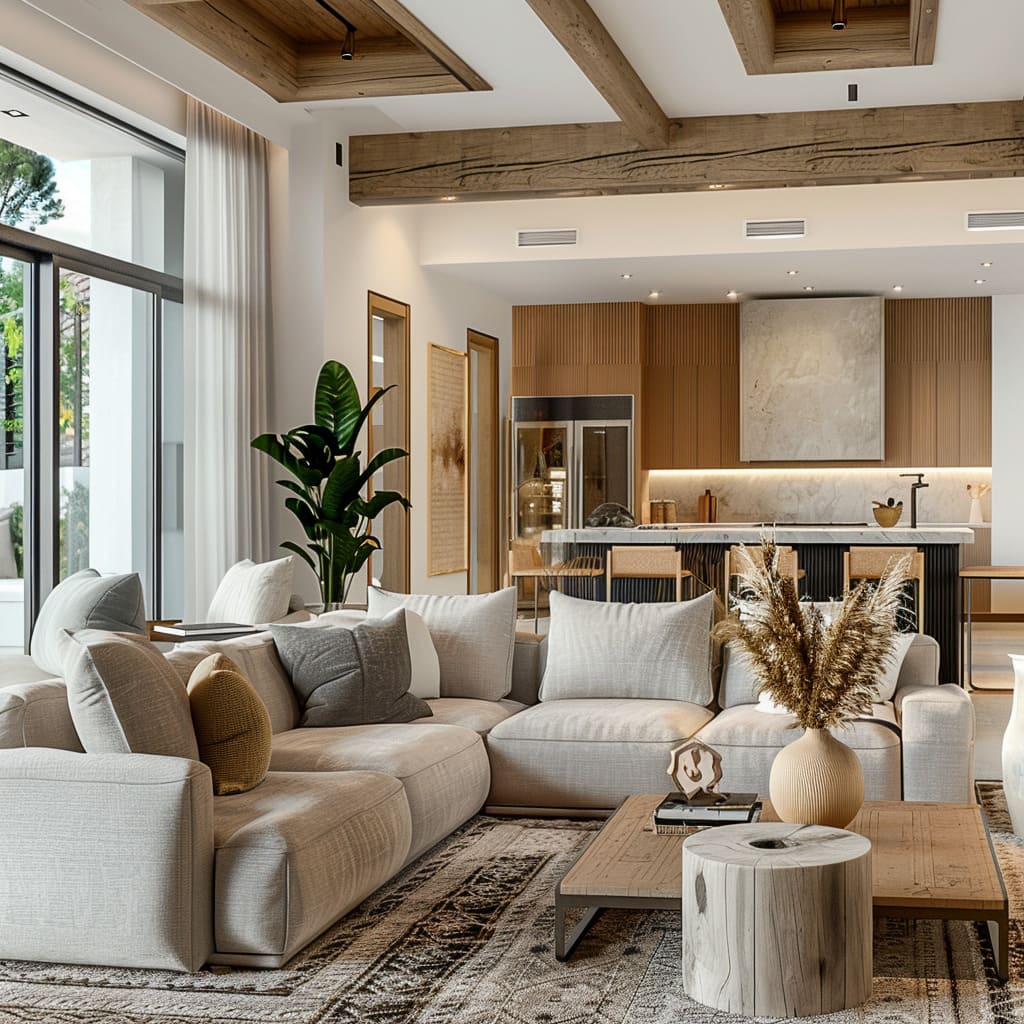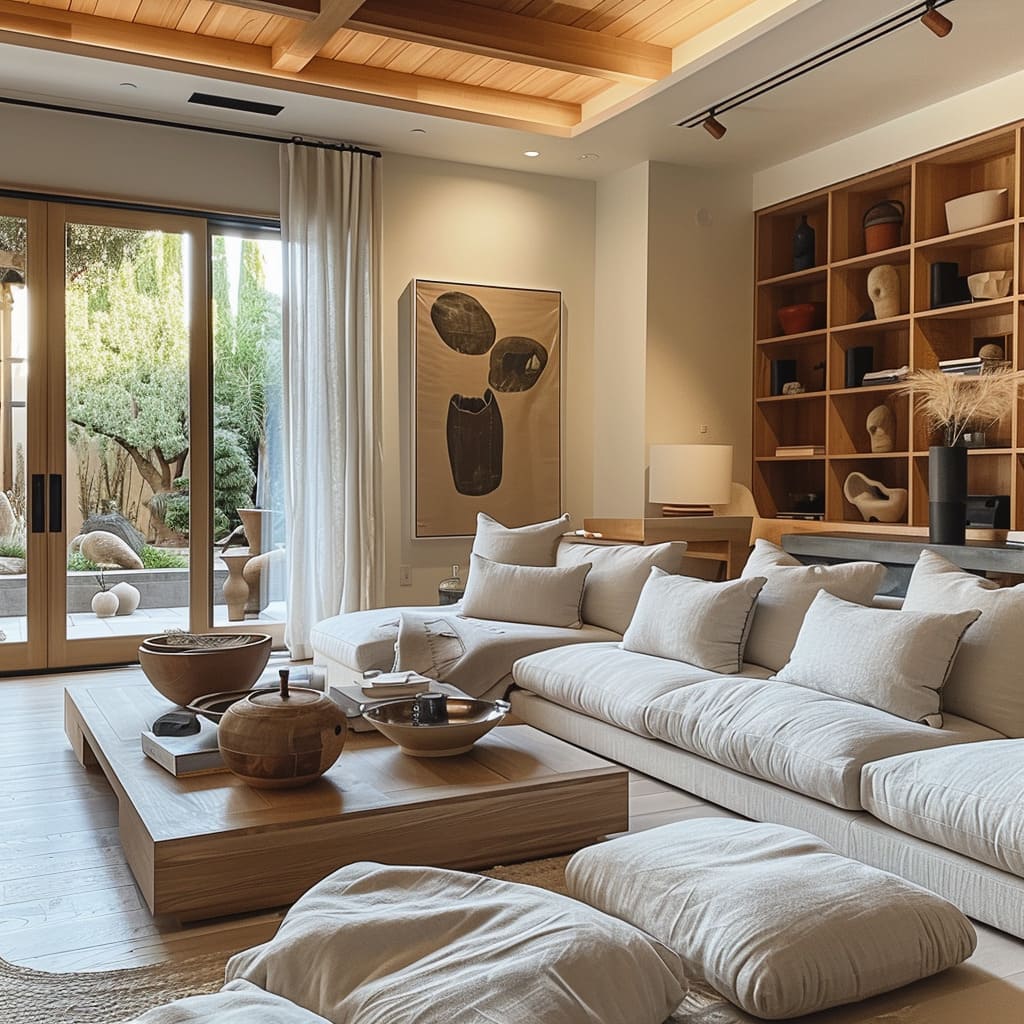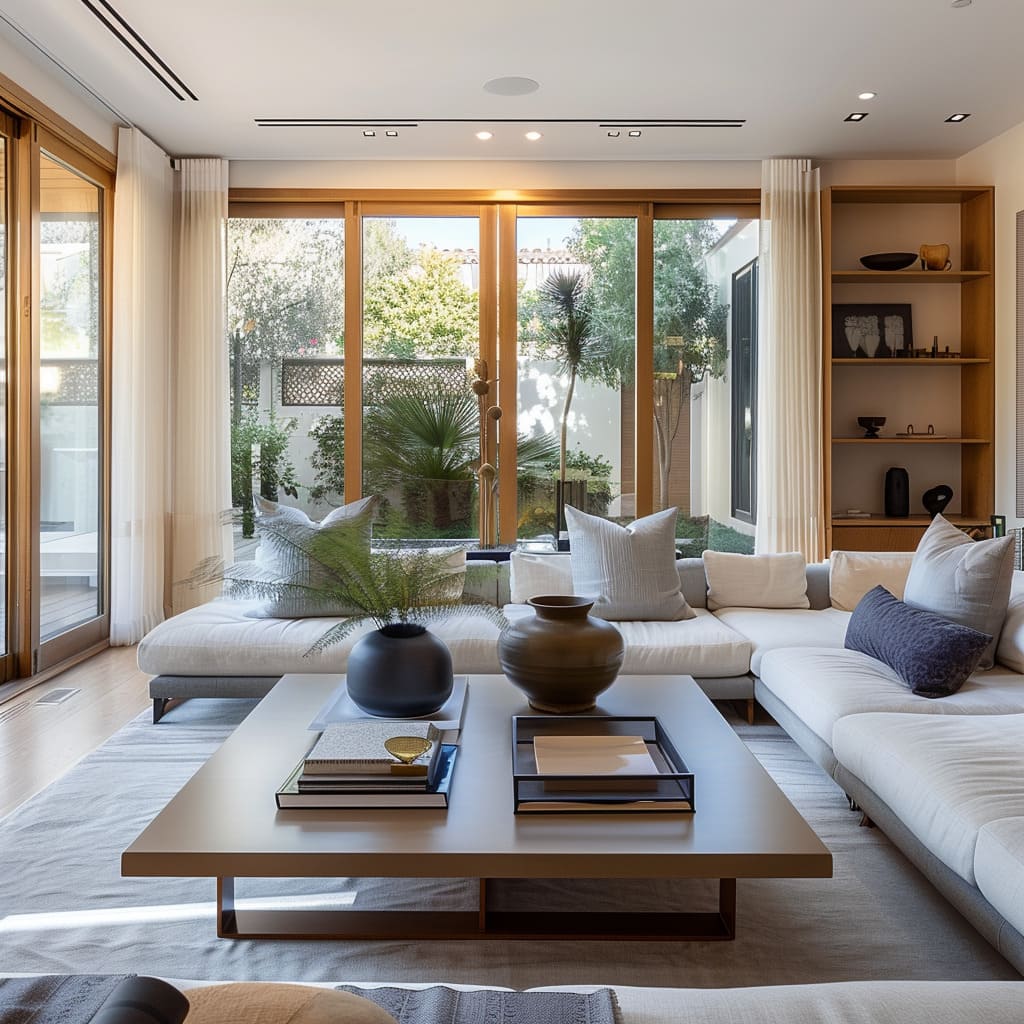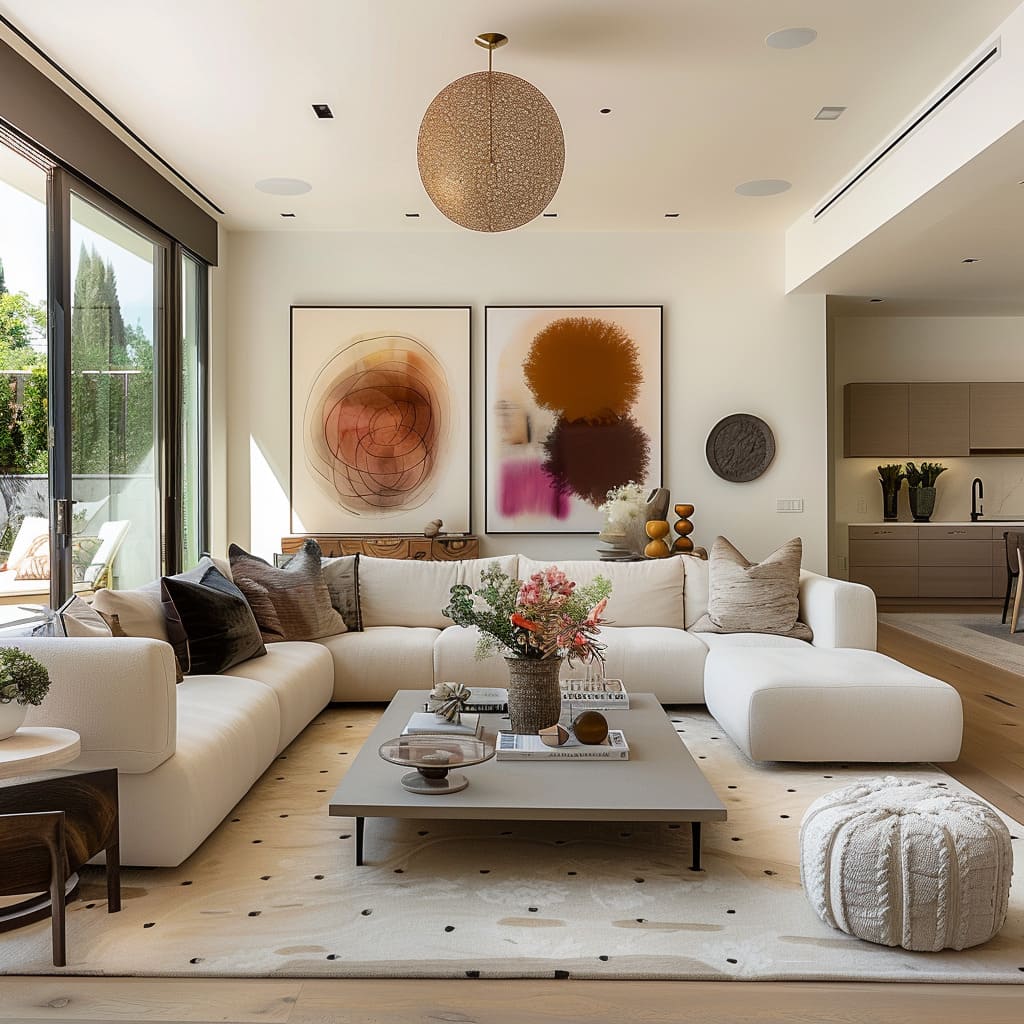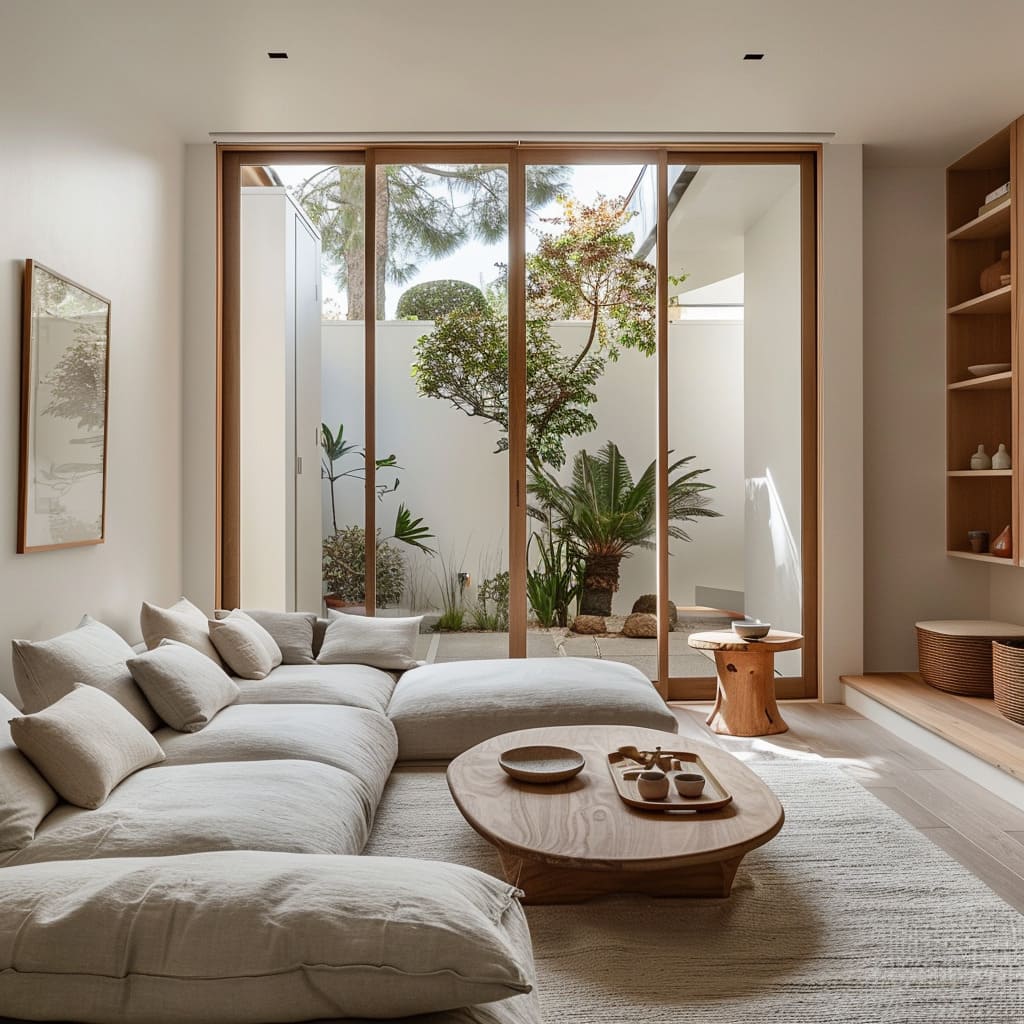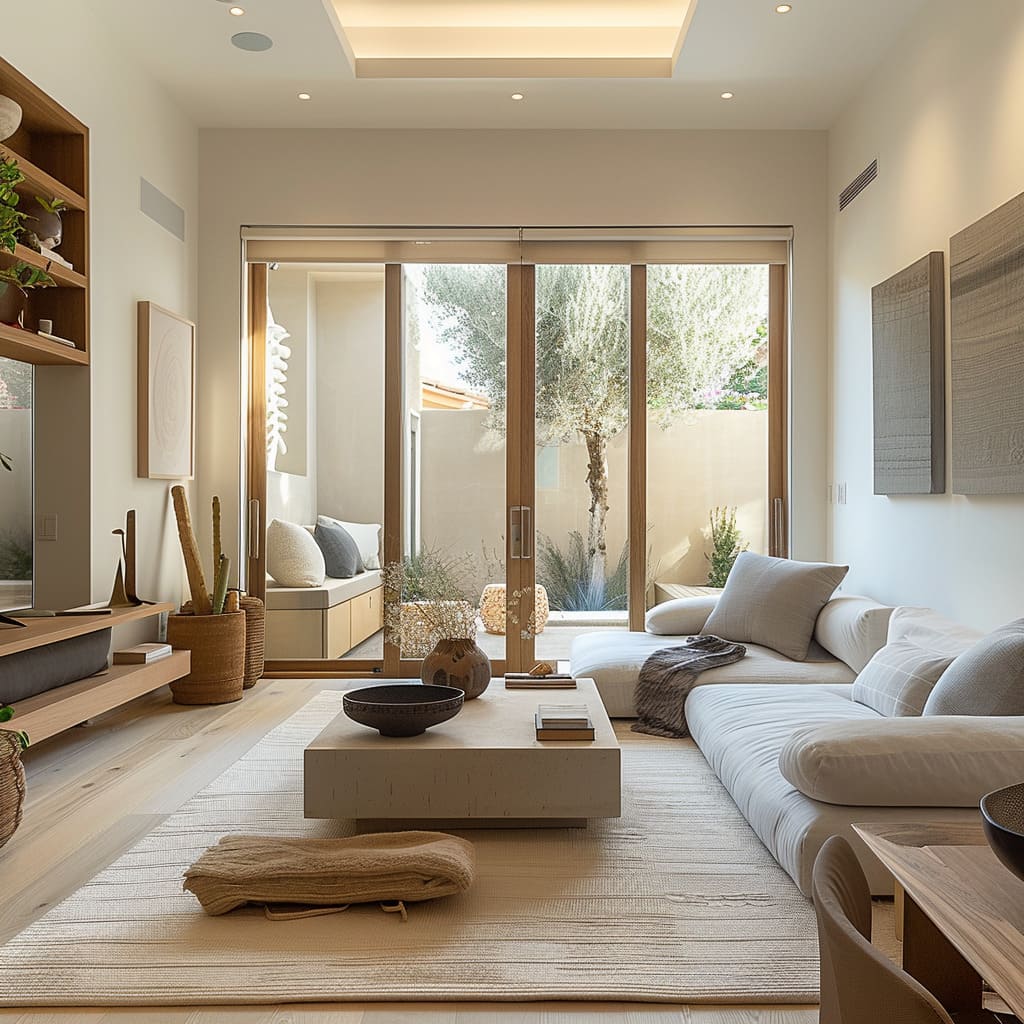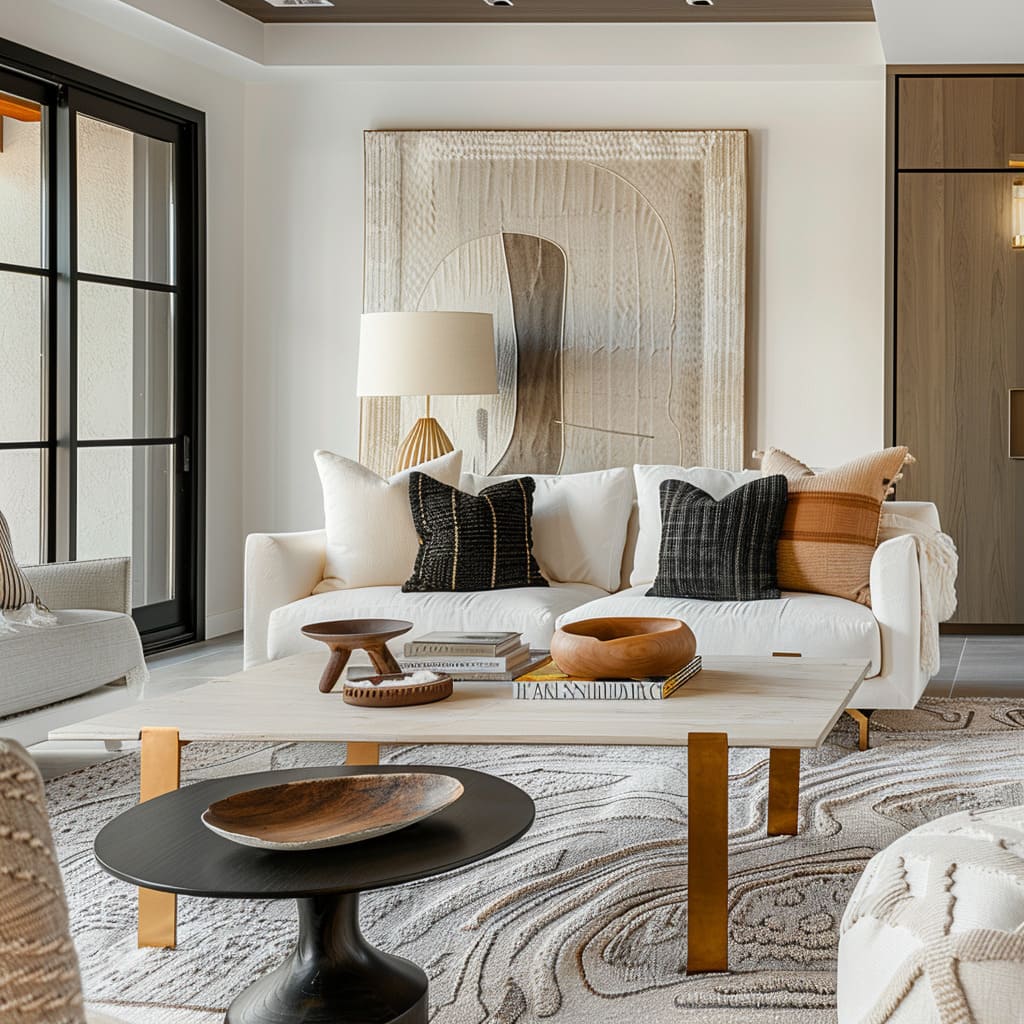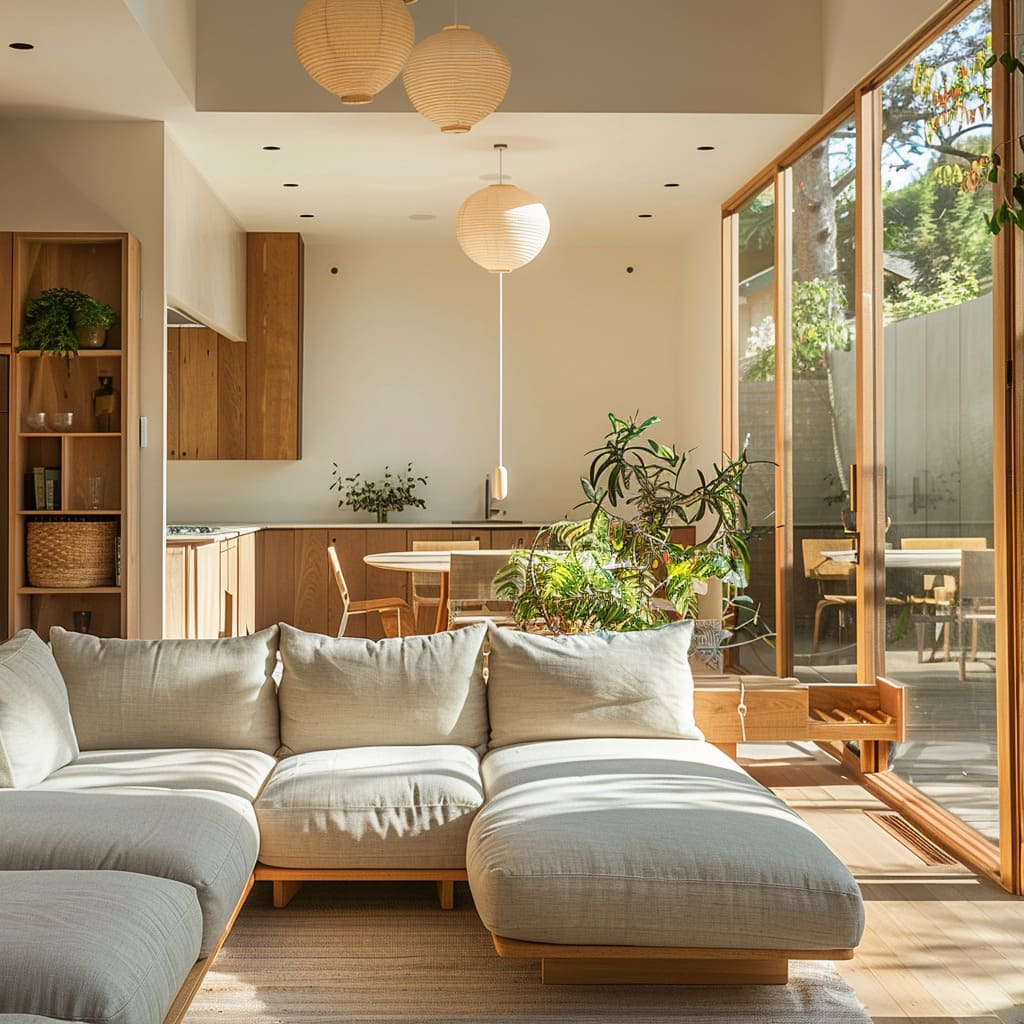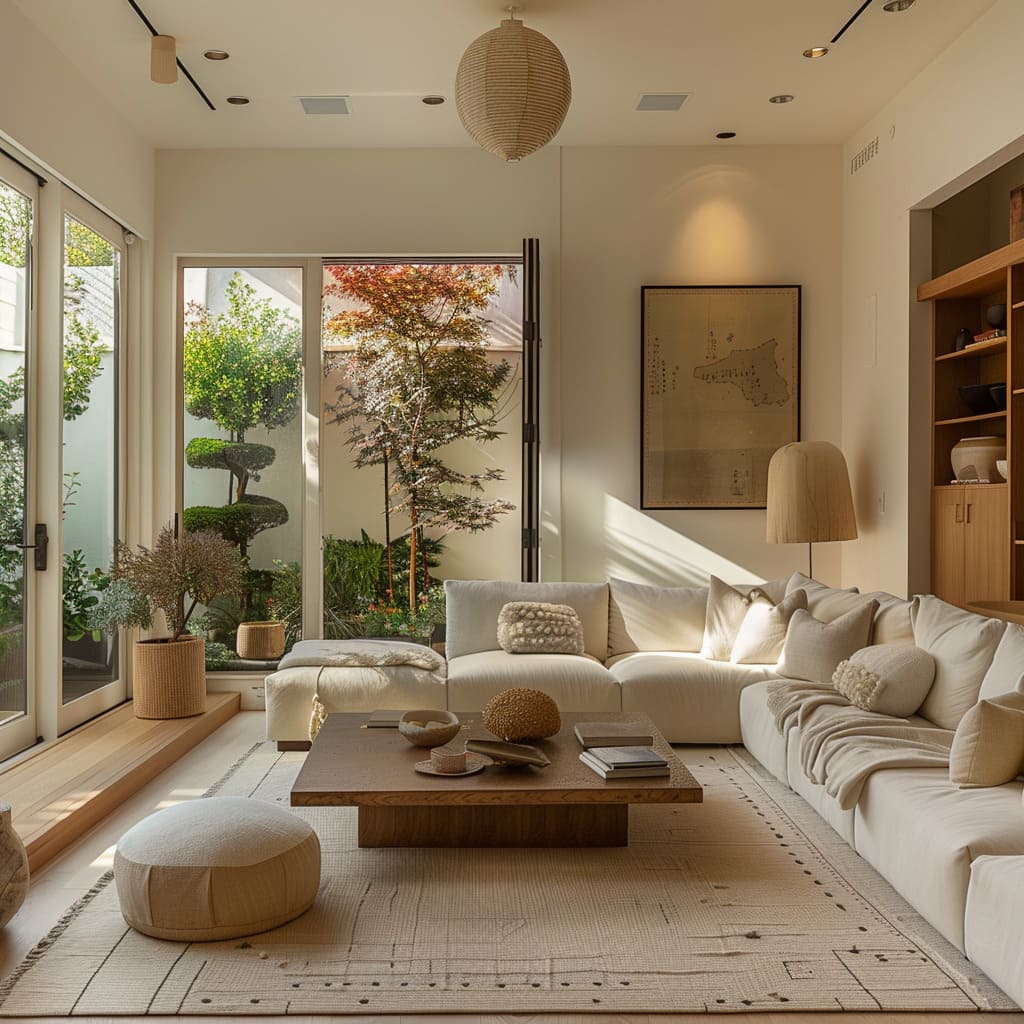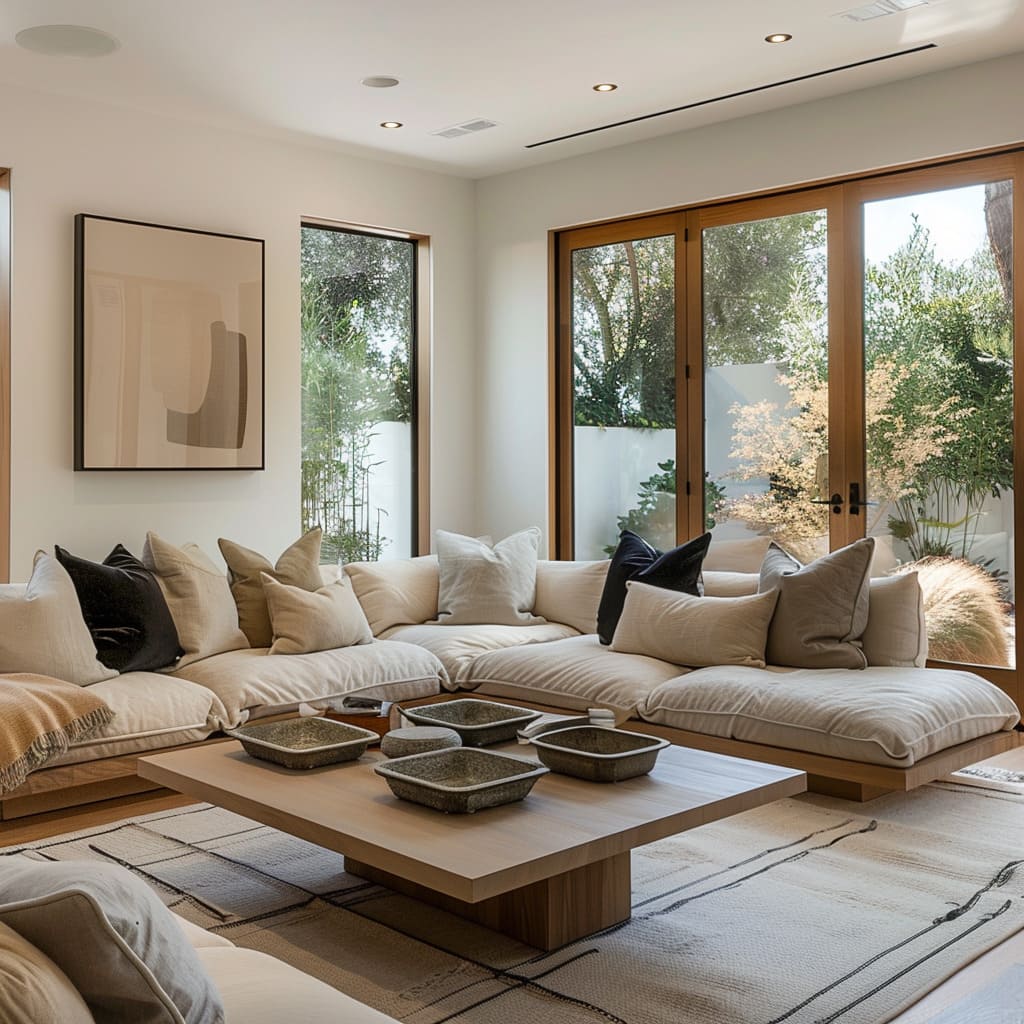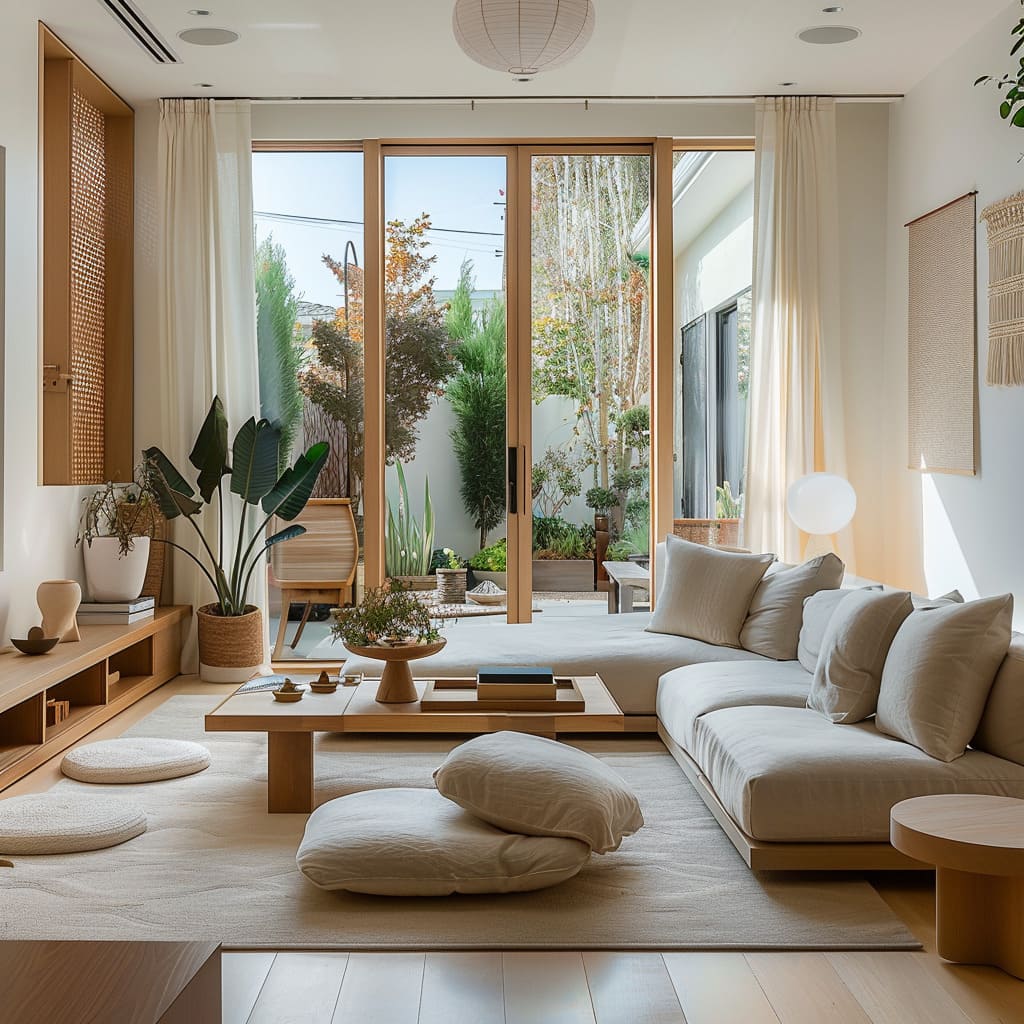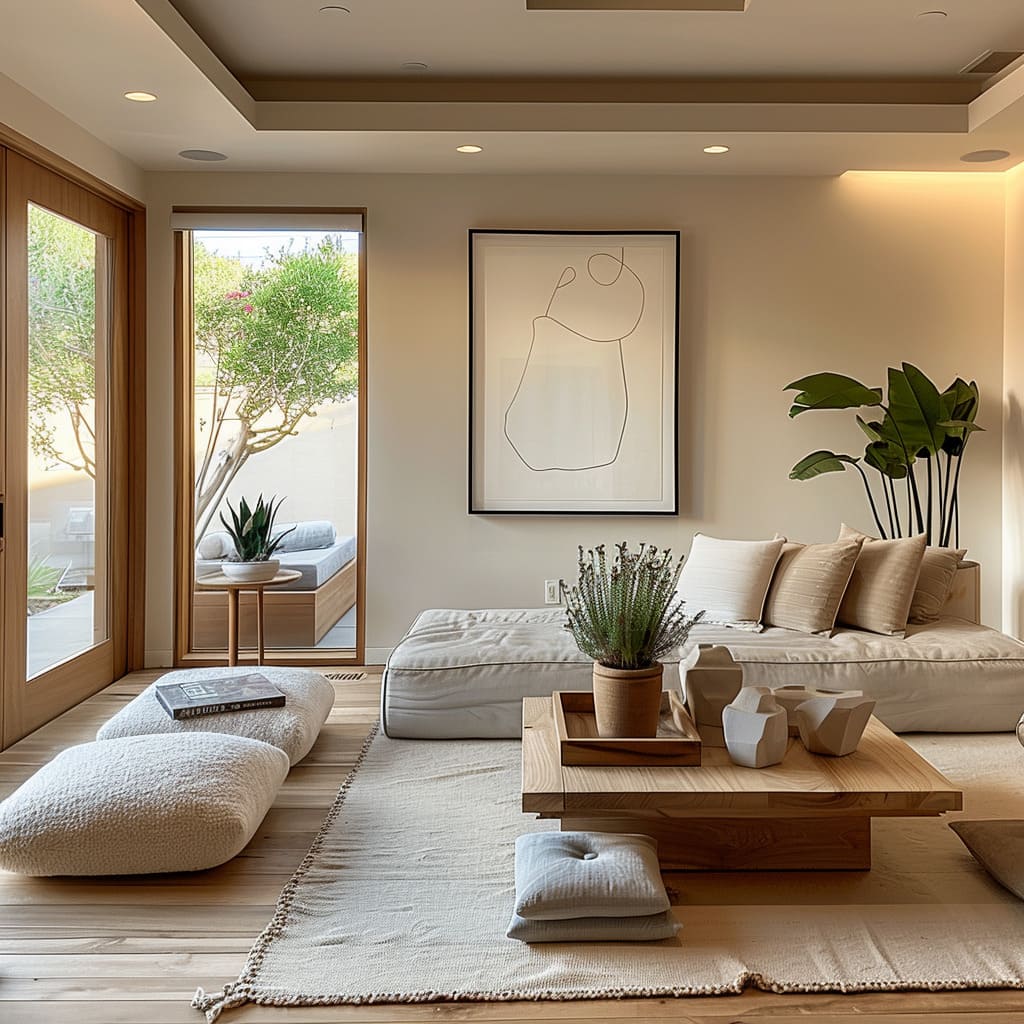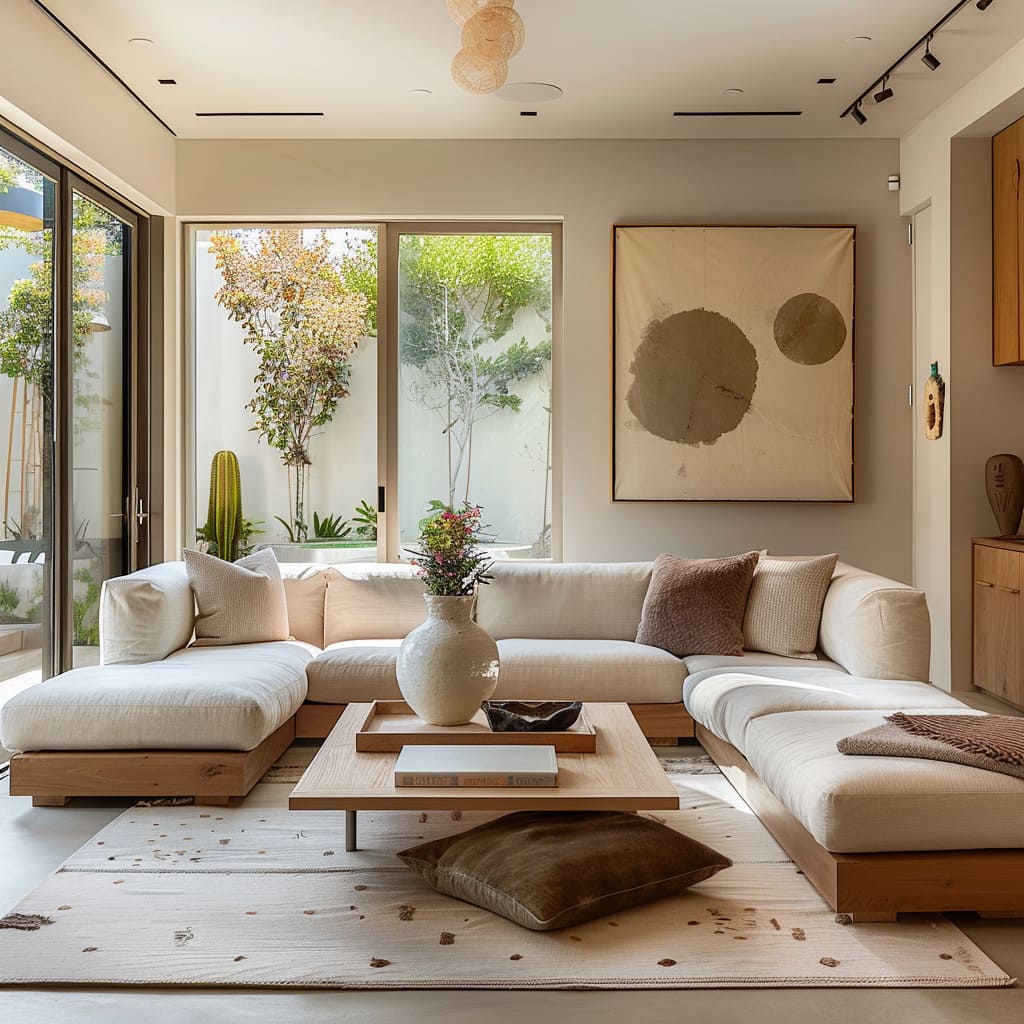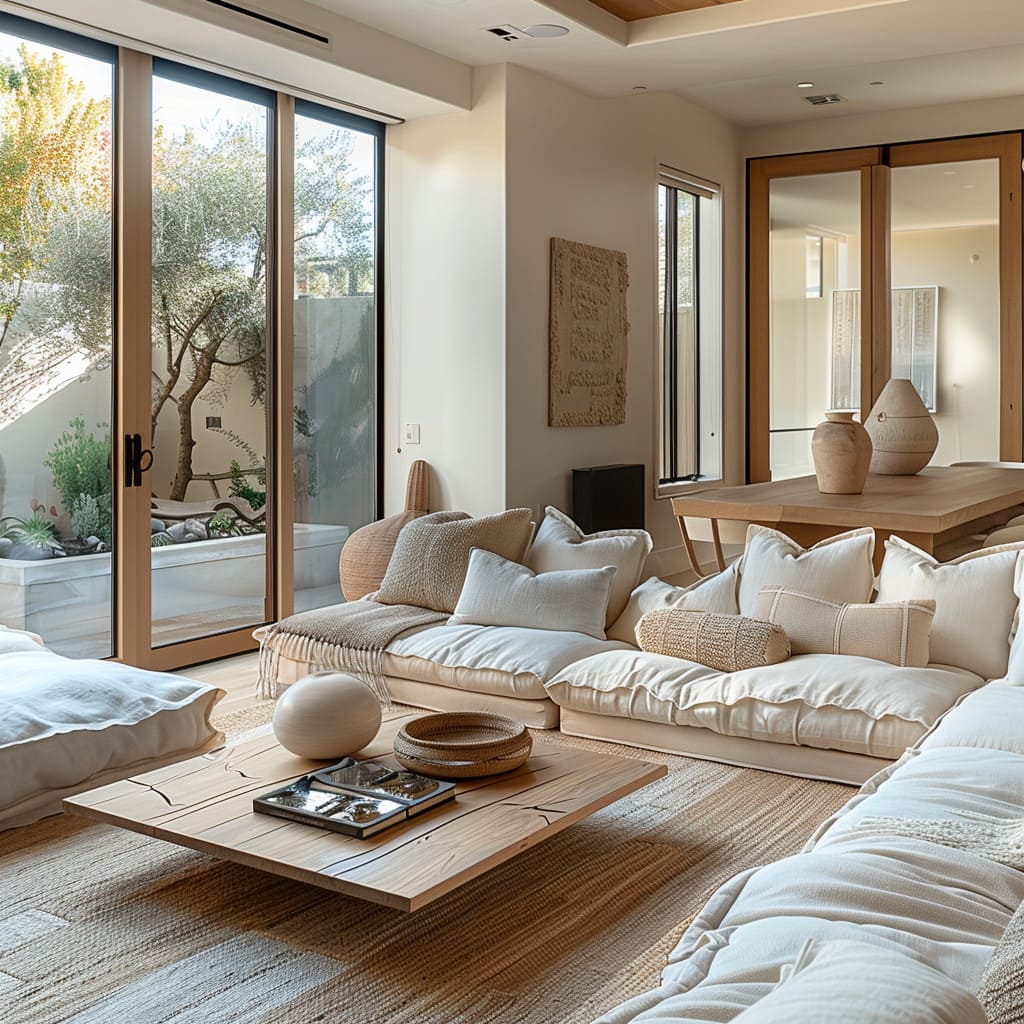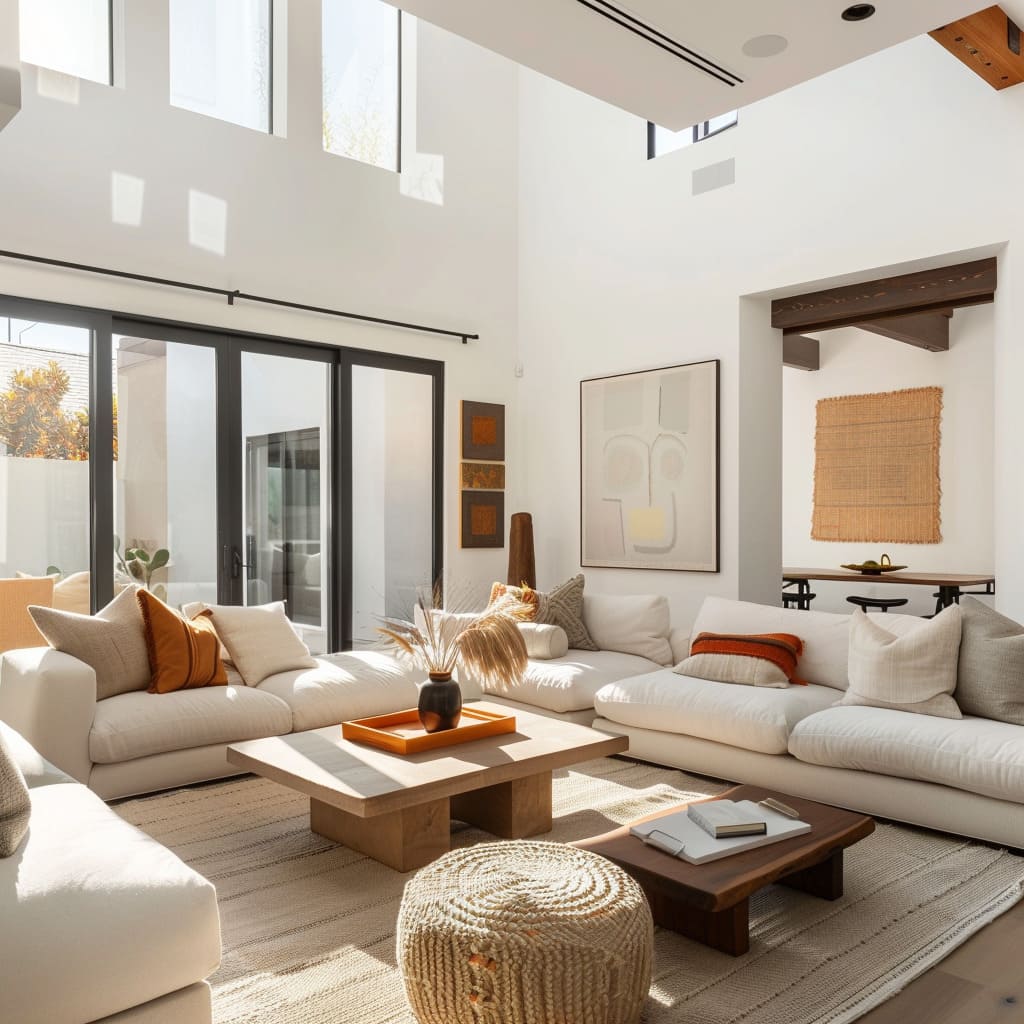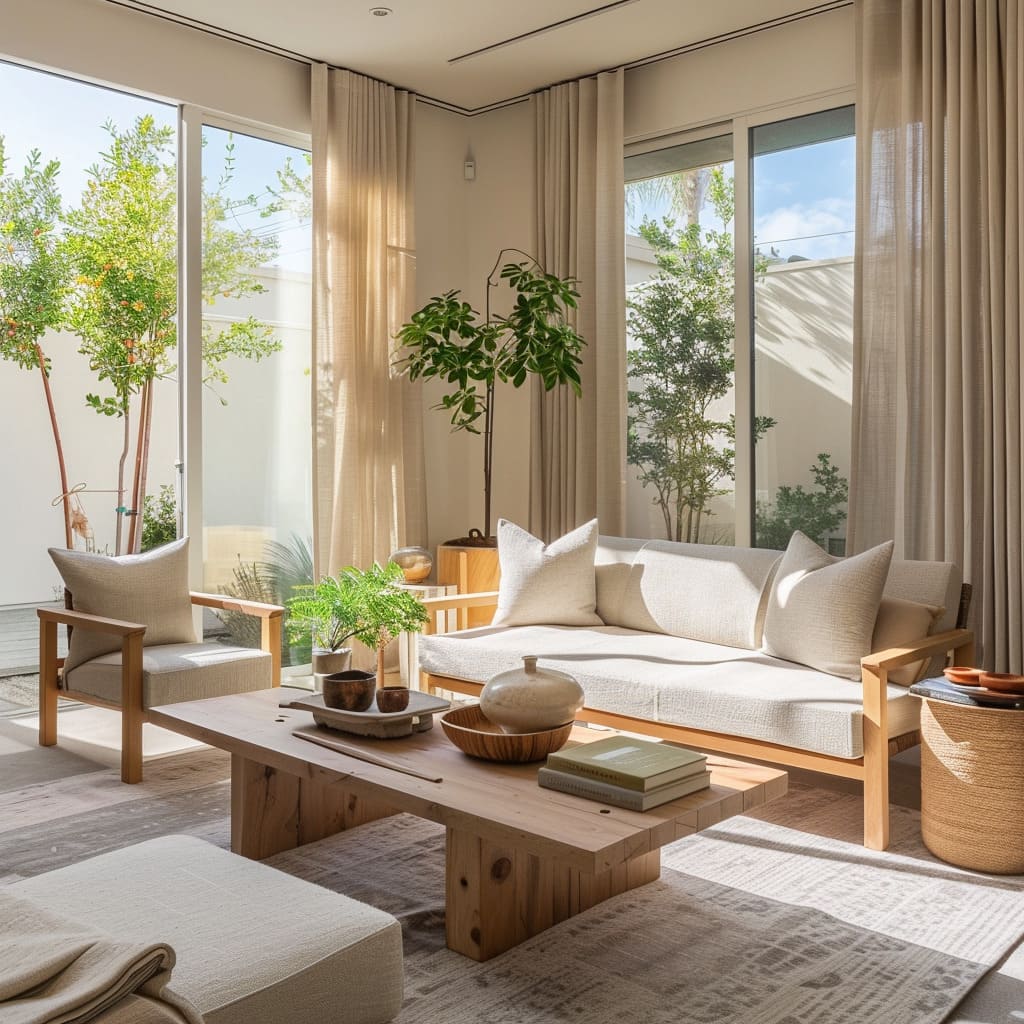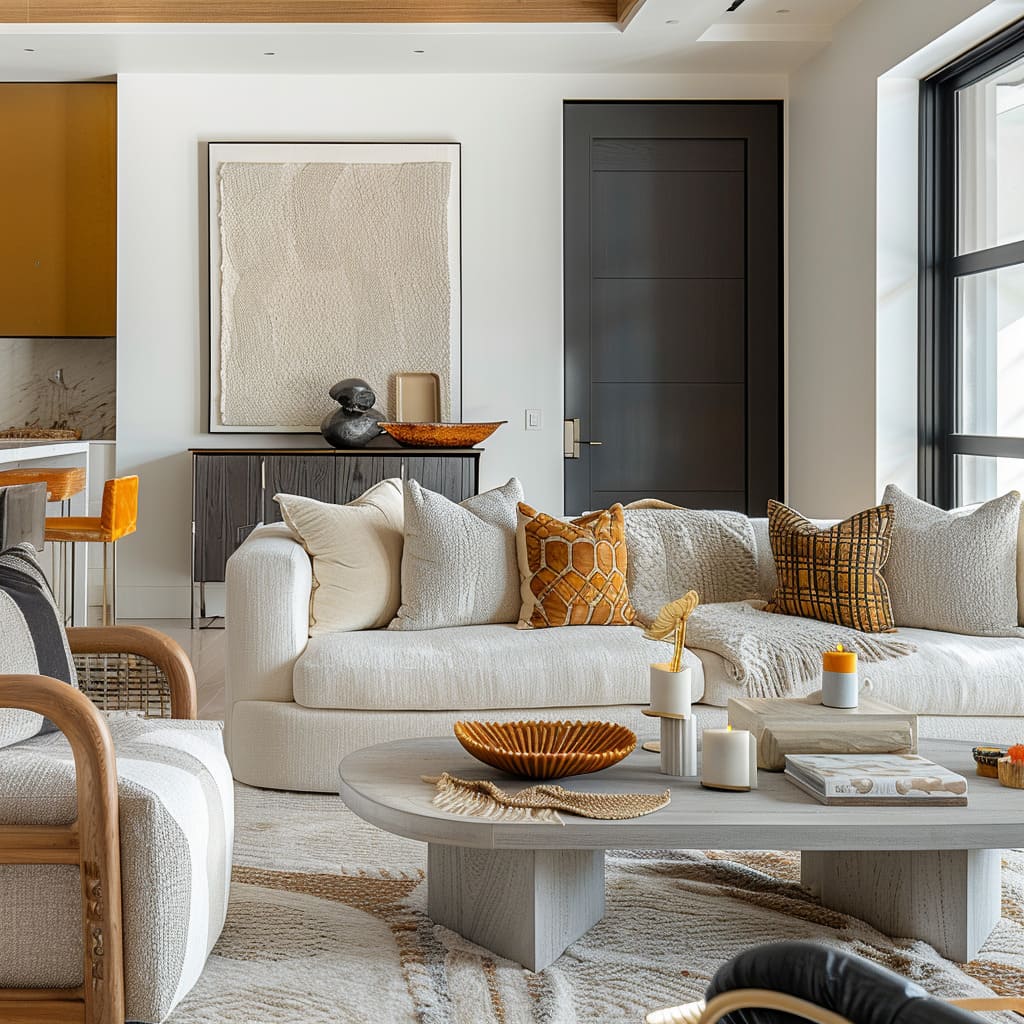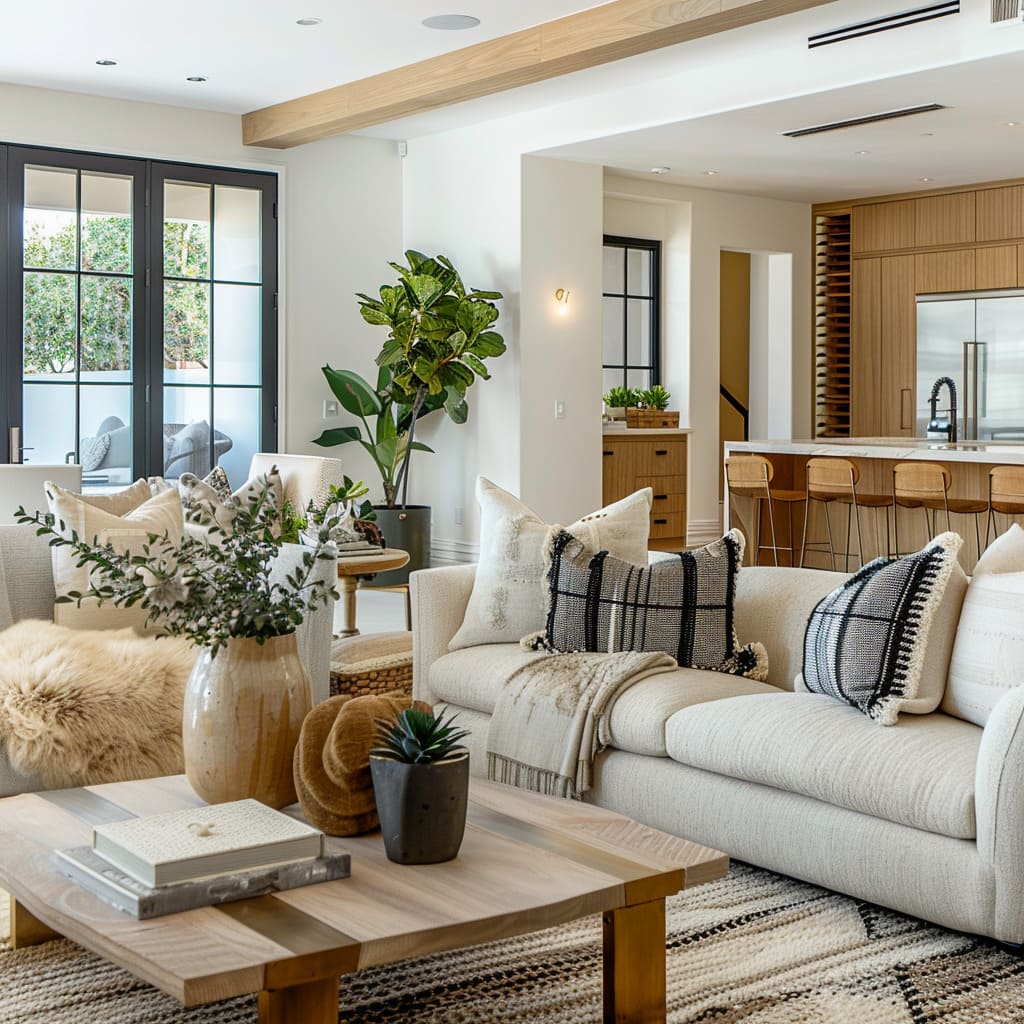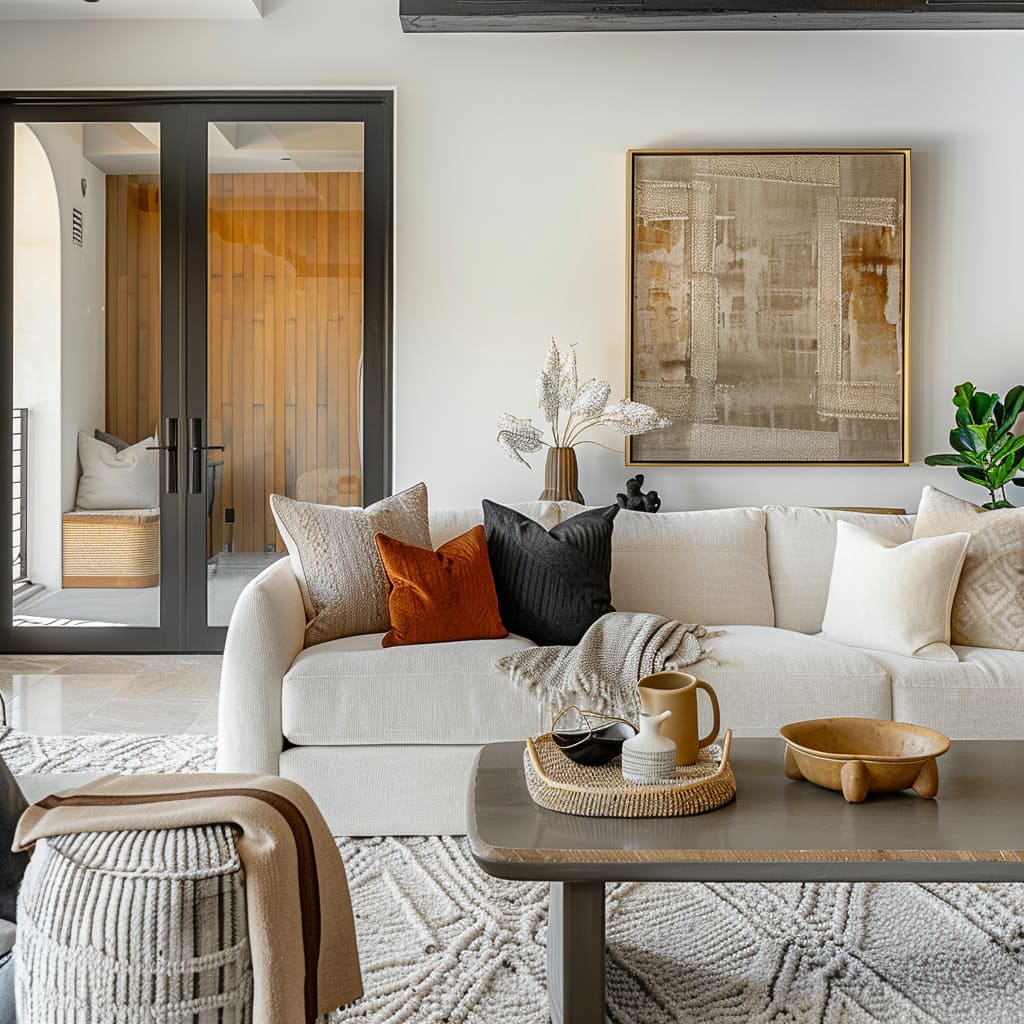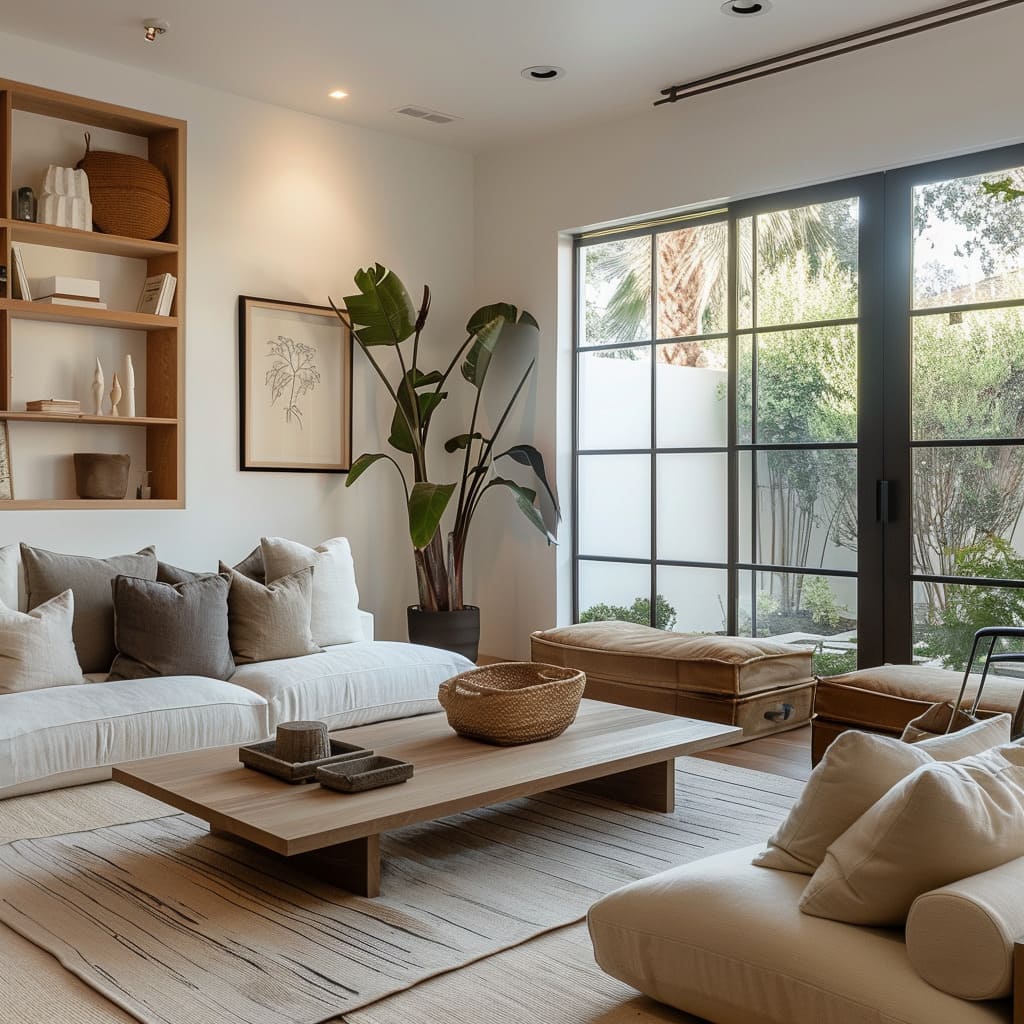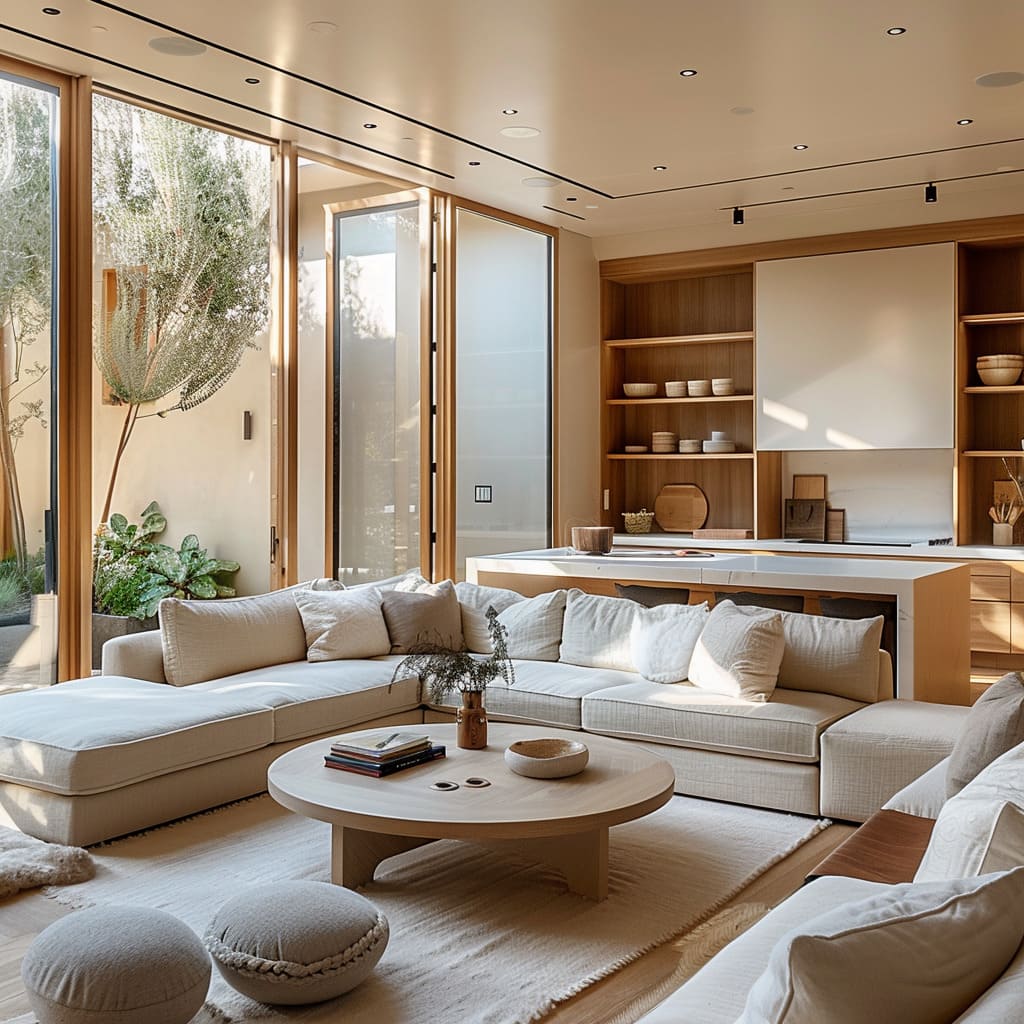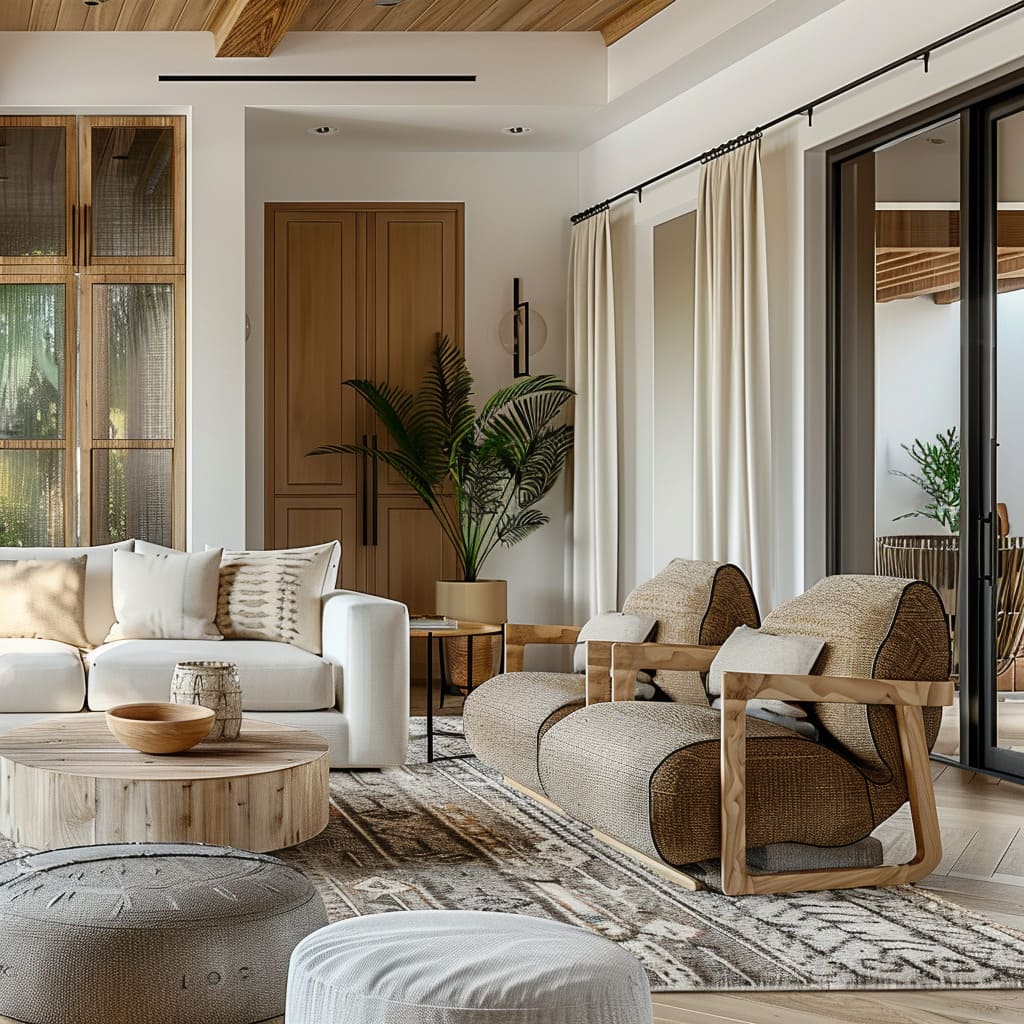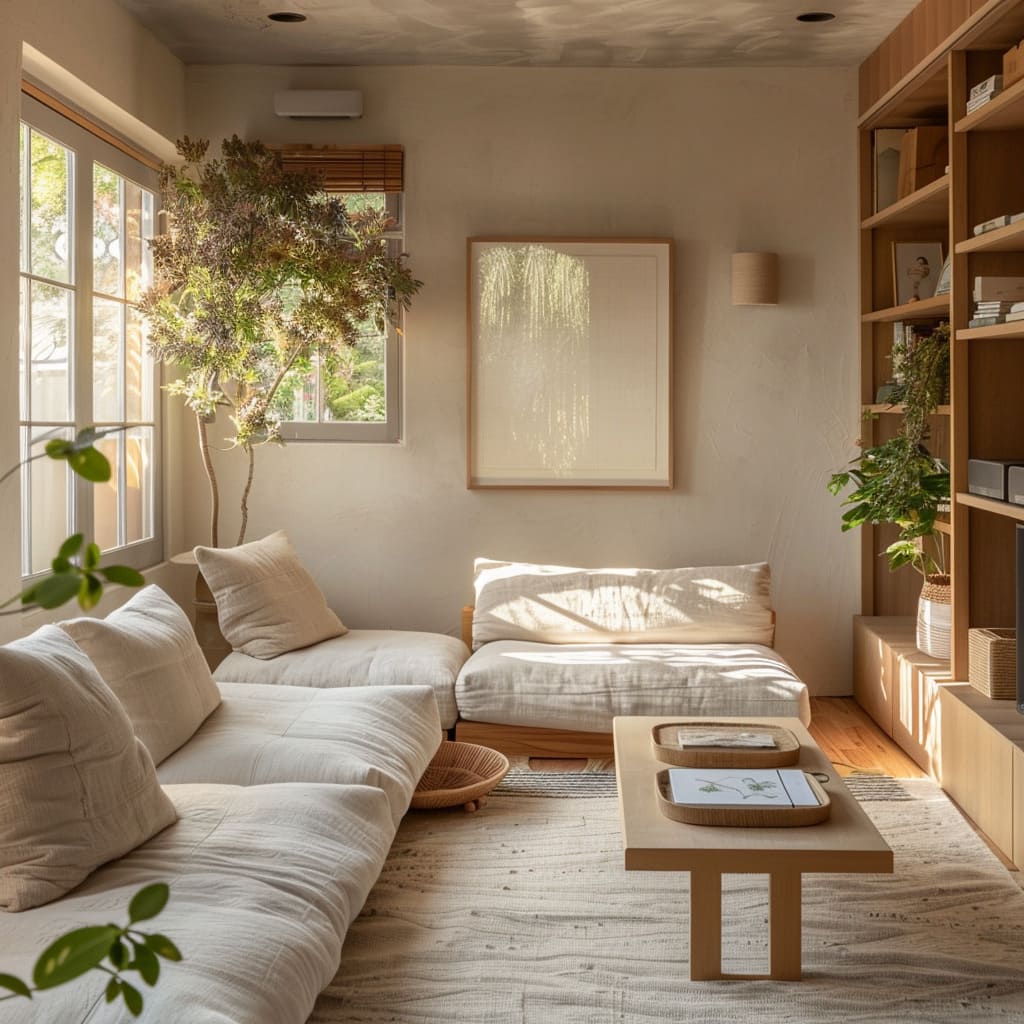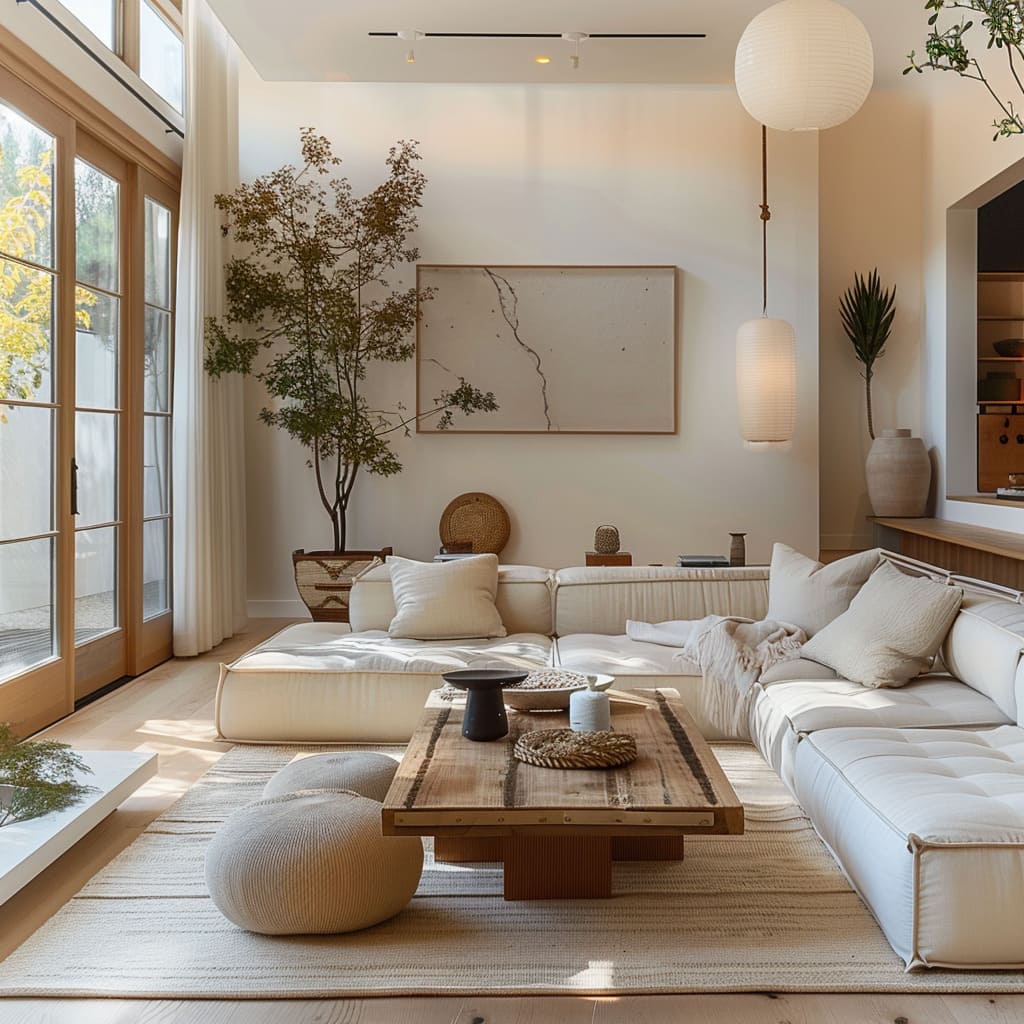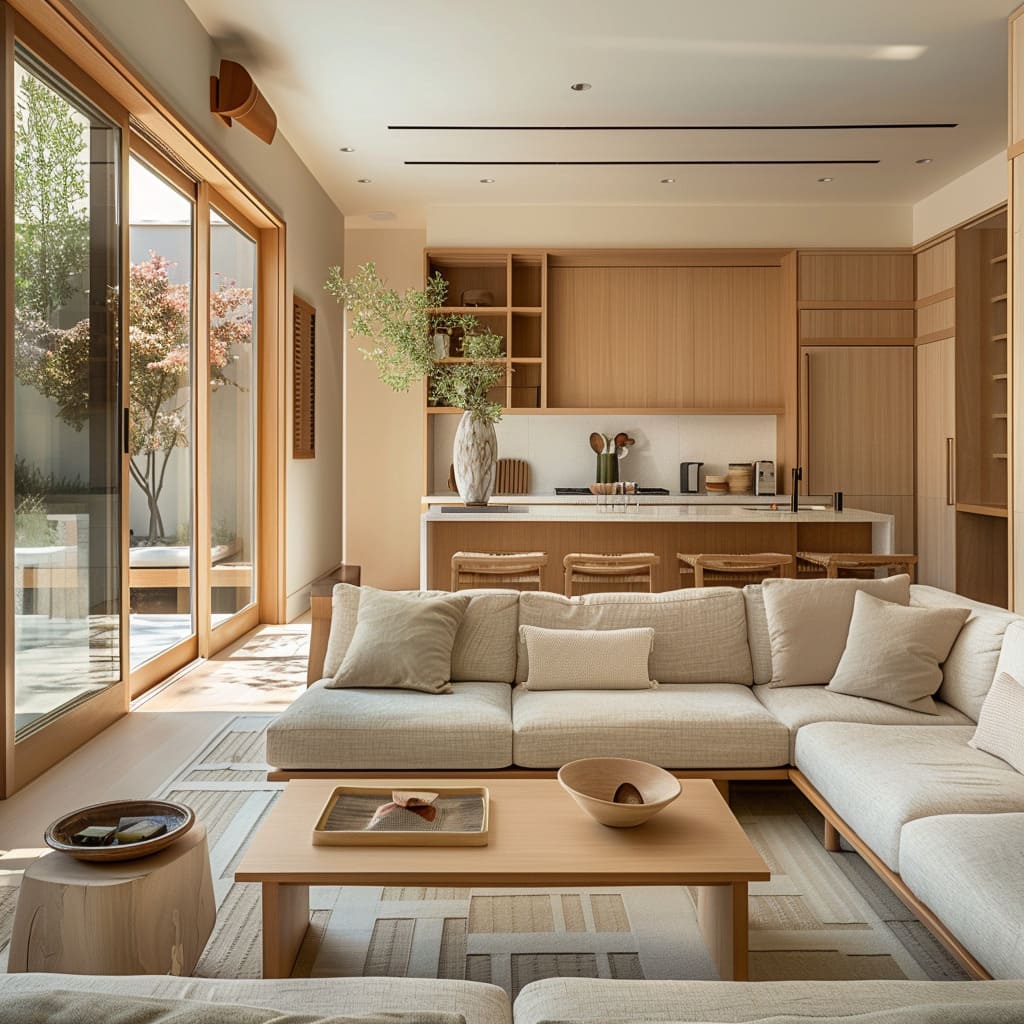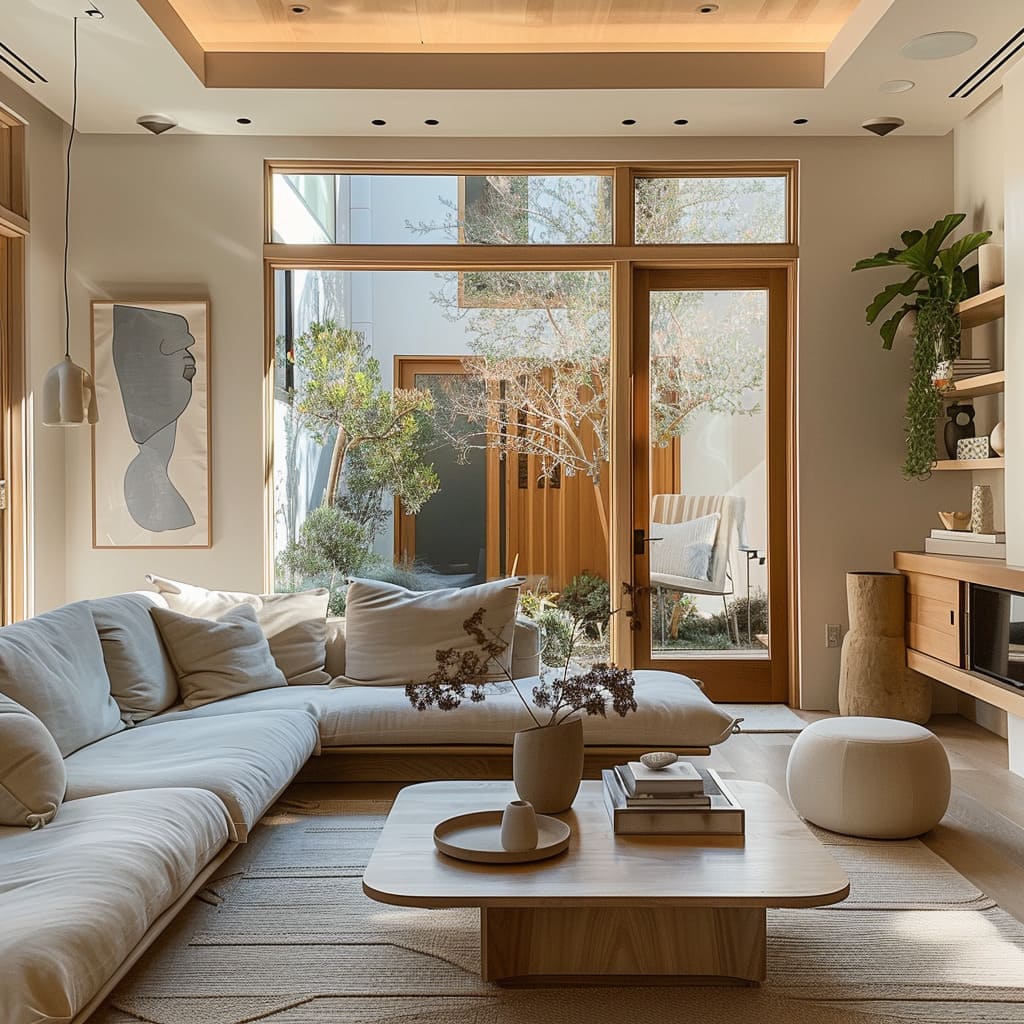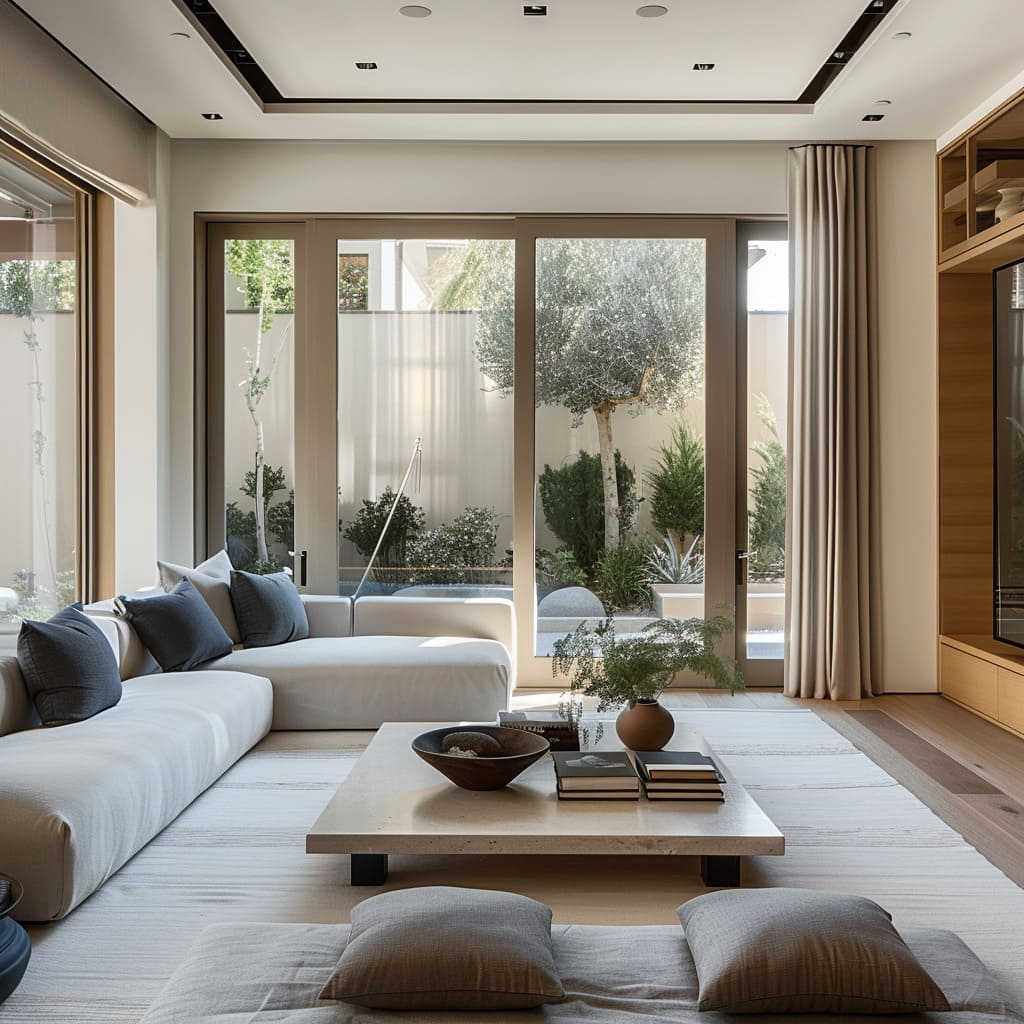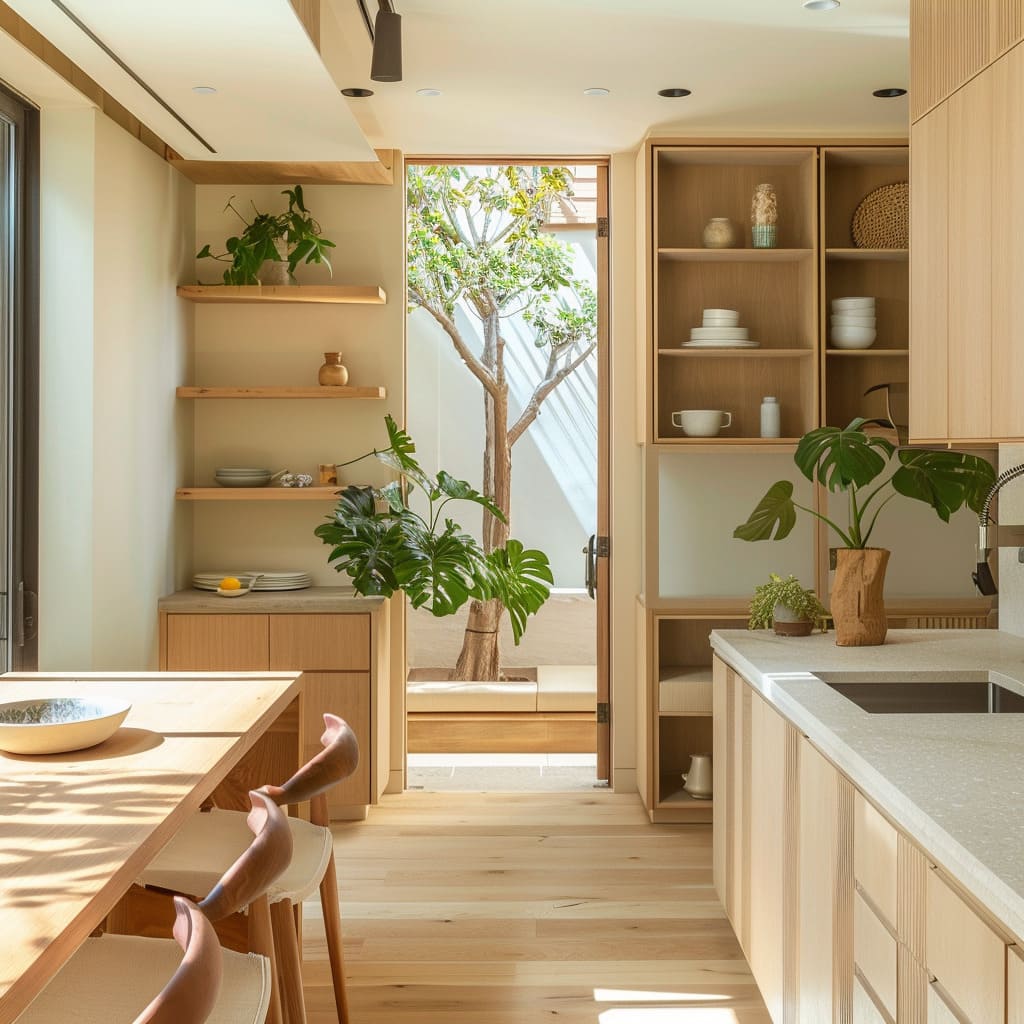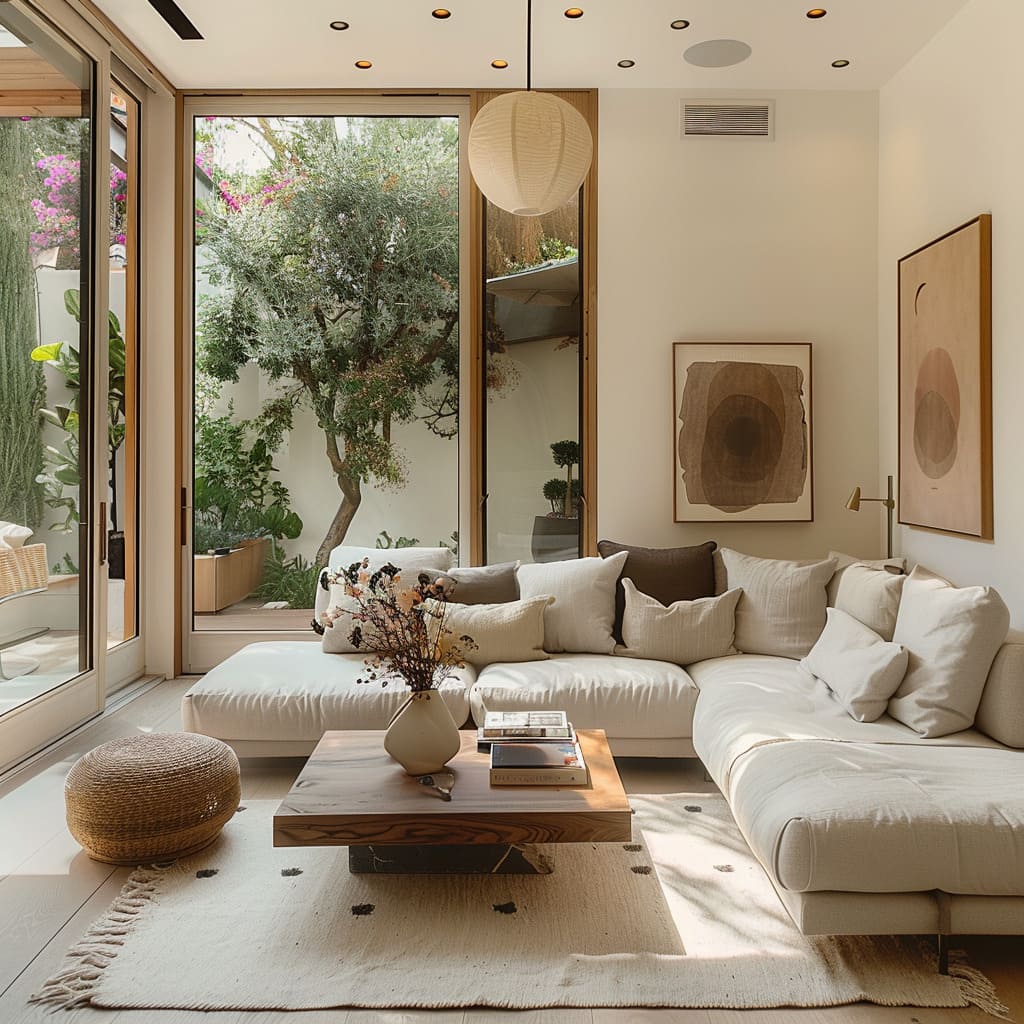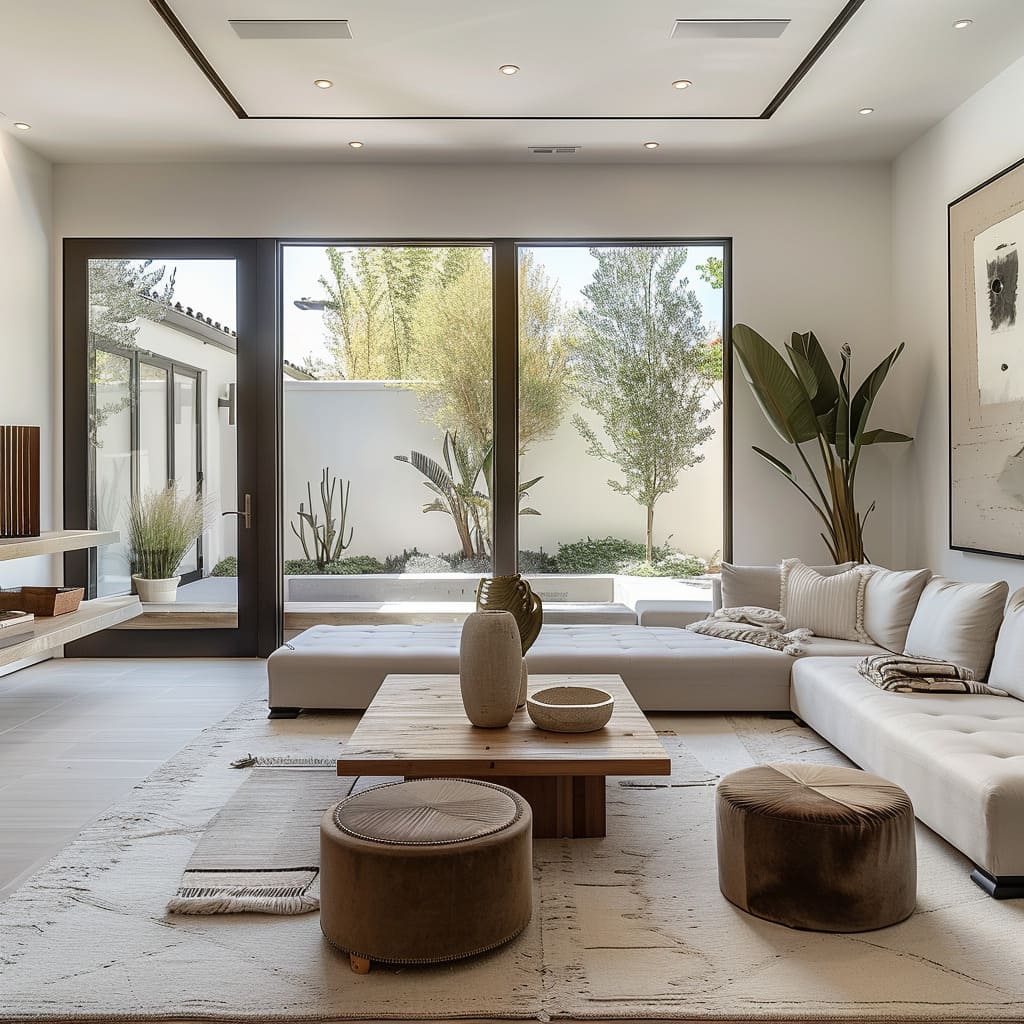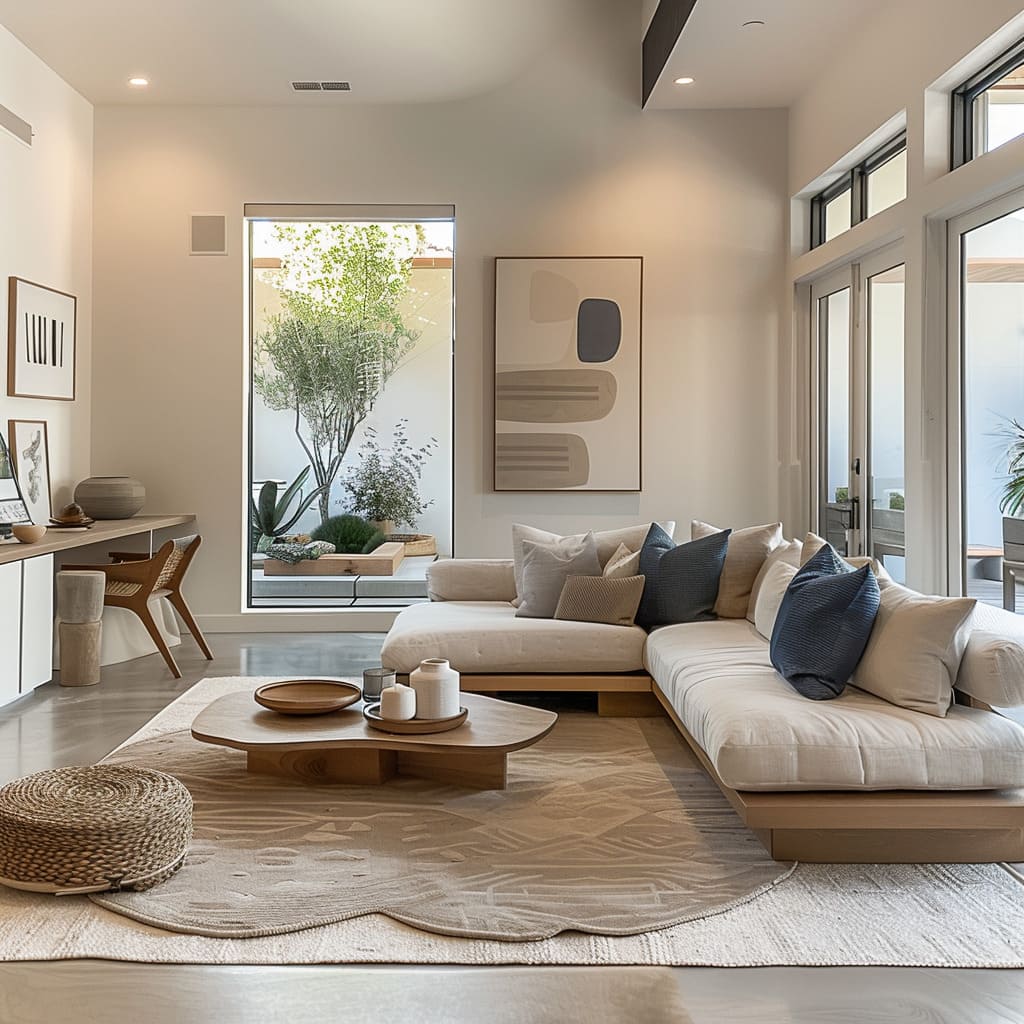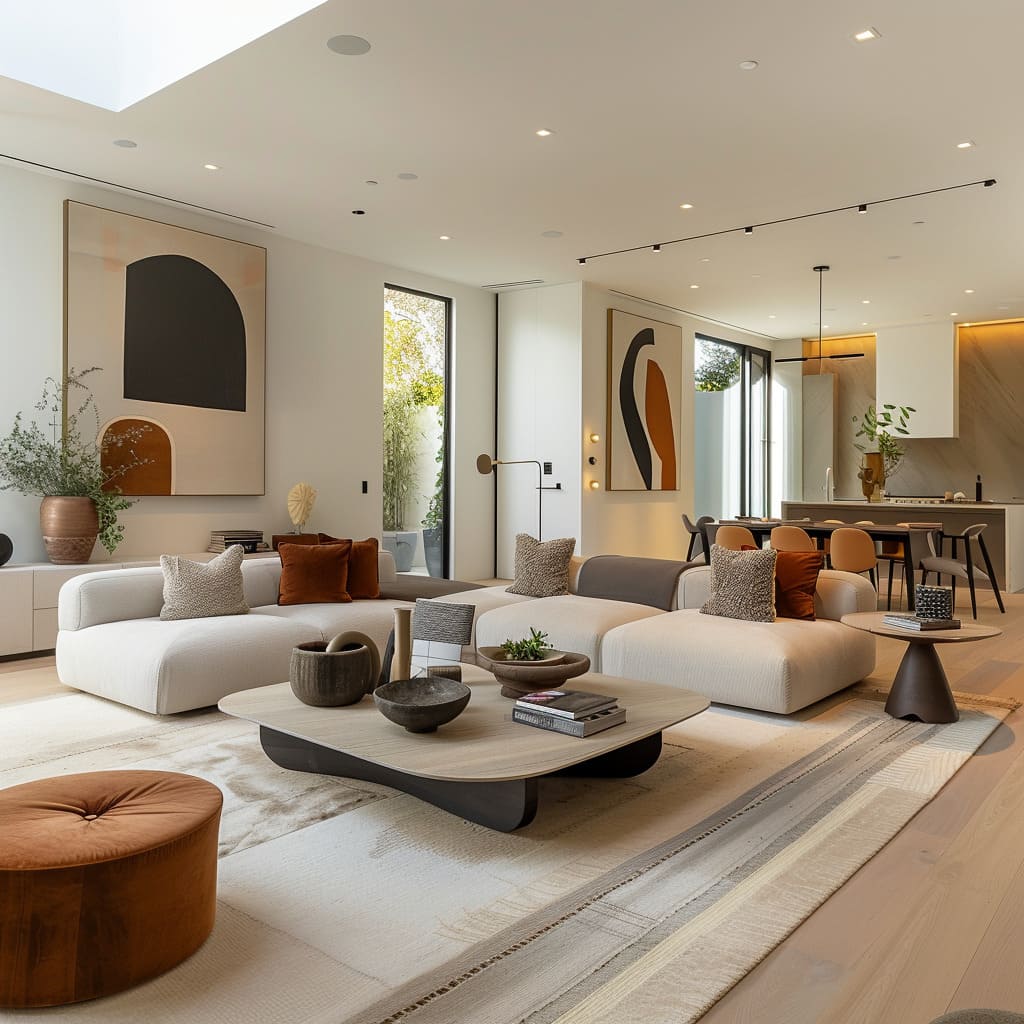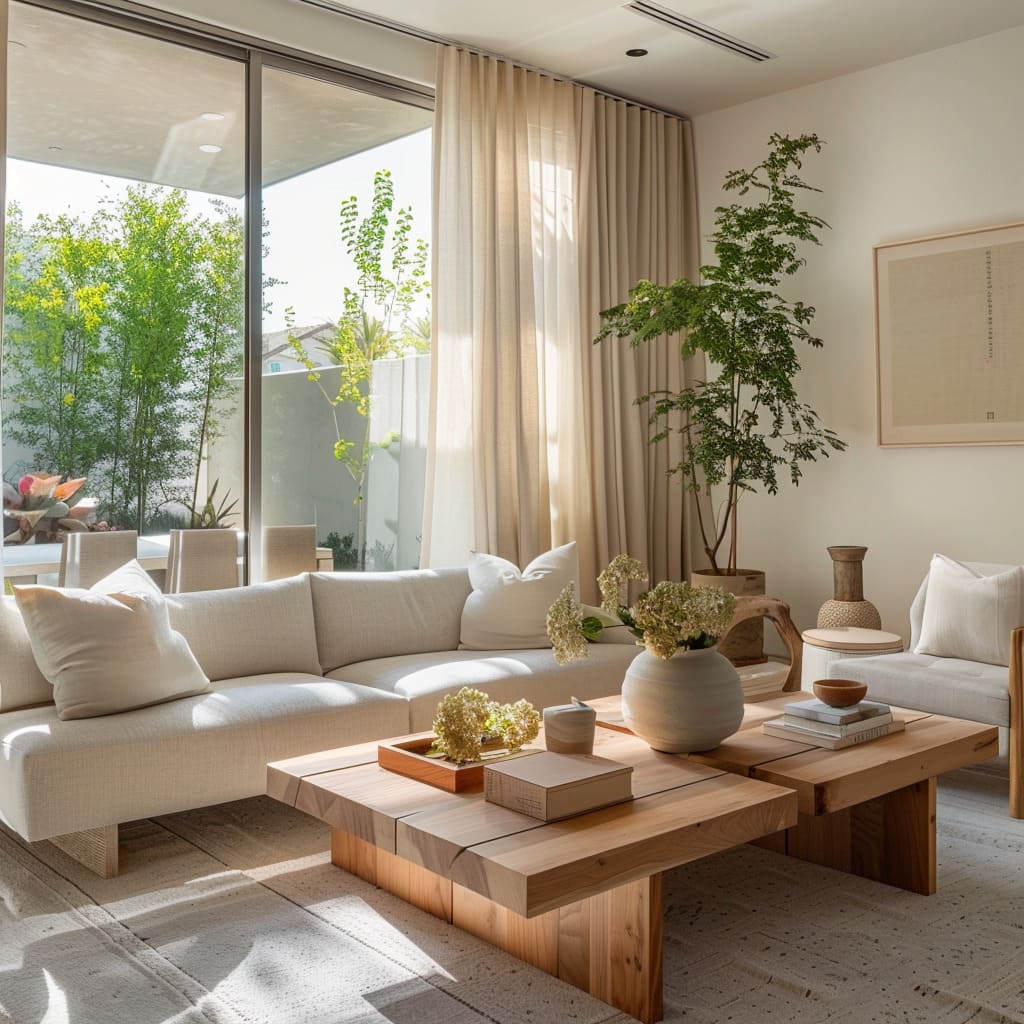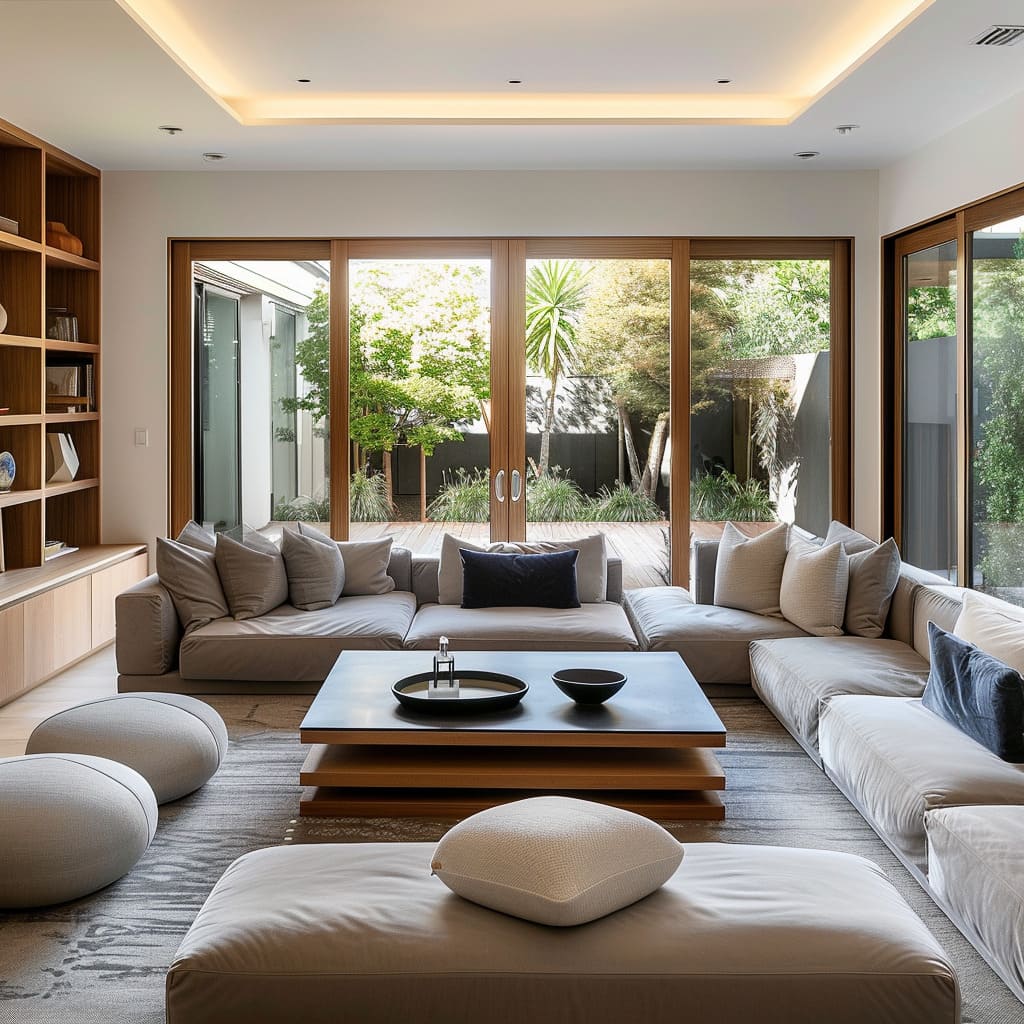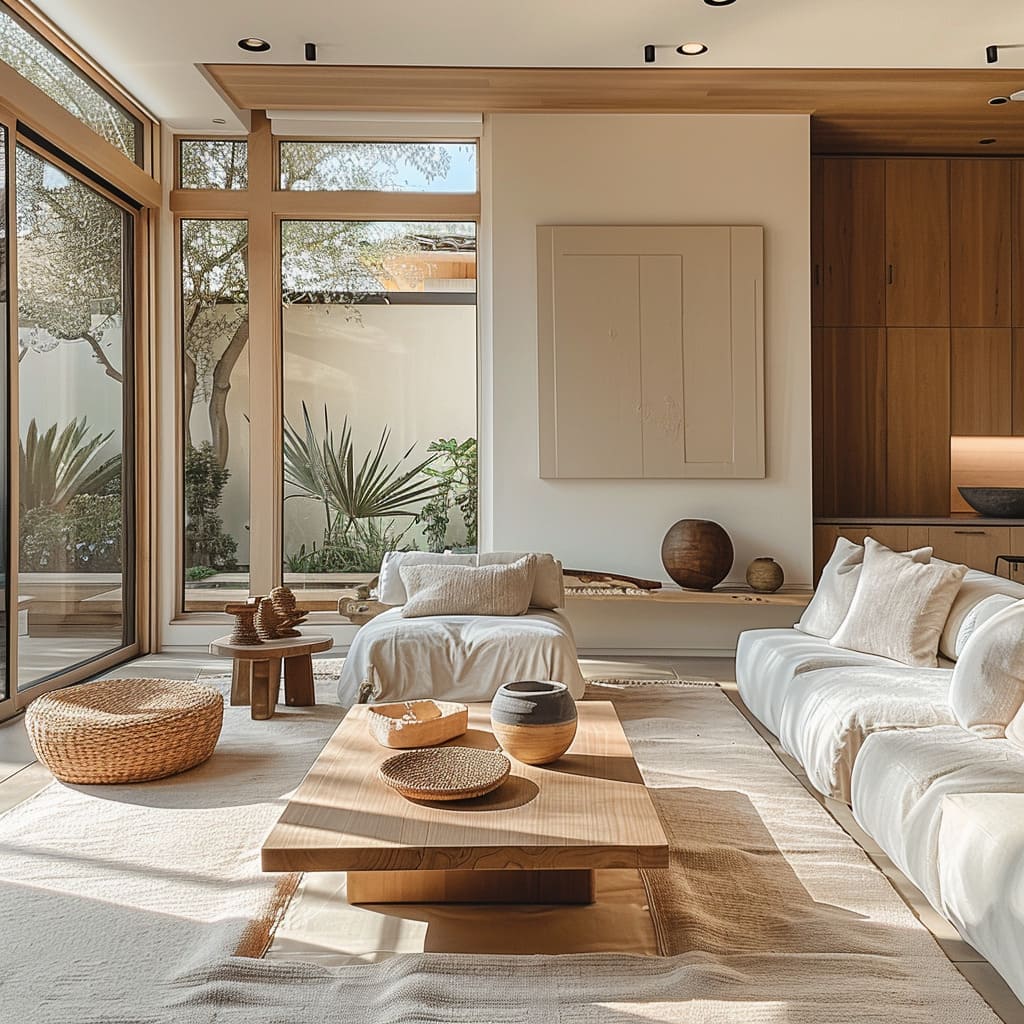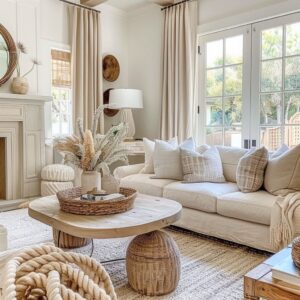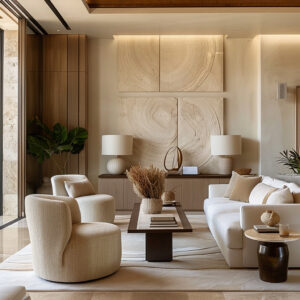Welcome to the comprehensive guide on Japandi style interior design and decor, a trend that has captured the hearts of homeowners and designers across the United States. This unique style blends the minimalistic serenity of Japanese design with the functional coziness of Scandinavian decor, creating spaces that are both aesthetically pleasing and profoundly tranquil.
Currently trending across various states, including California, New York, and Oregon, Japandi style has become a favored choice for those looking to infuse their homes with a sense of calm and refined simplicity.
This guide will explore the defining characteristics of Japandi design, from its emphasis on natural materials and neutral color palettes to its clever integration of space-saving solutions and organic forms. Whether you are renovating a downtown apartment or refreshing a suburban home, the principles of Japandi style can transform your living space into a haven of minimalist elegance and functionality.
Let’s delve into the serene world of Japandi interior design and discover how this trend is making its mark from coast to coast.
Natural and Artisanal Features
This guide section explores how natural materials and handcrafted elements play a critical role in Japandi interiors. Features such as Natural Wood Elements, Use of Ceramics, Handmade Accessories, and Earthy Planters emphasize the tactile and visual warmth that handcrafted items and raw materials bring to a space.
Each piece reflects a respect for craftsmanship and the inherent beauty of natural imperfections.
Natural Wood Elements
In Japandi interior design, the presence of visible wood grains is not just a detail but a statement of nature’s inherent beauty and simplicity. Furniture and paneling often showcase light to medium wood tones, enhancing the warm, inviting atmosphere of the space.
This element aligns with the Japandi colour palette, which favors understated, earthy hues that echo the natural world, creating a seamless blend of indoor and outdoor aesthetics.
Use of Ceramics
Japandi decor integrates ceramics to enrich the environment with a blend of functionality and artistic expression. These pieces, whether glazed with subtle sheens or left unglazed to reveal the material’s raw texture, serve as focal points in a space that values subtlety and detail.
The ceramics often feature organic shapes, which harmonize with the minimalist principles central to Japandi style, reinforcing the aesthetic’s commitment to understated elegance.
Handmade Accessories
Emphasizing the value of craftsmanship, handmade accessories in Japandi interiors, such as handwoven baskets and artisanal ceramics, are more than just decorative. They are manifestations of skill and tradition that enhance the Japandi furniture’s clean lines by adding texture and a personal touch to each space.
These items resonate with the ethos of sustainable design, often utilizing natural materials that are both durable and aesthetically pleasing.
Earthy Planters
The use of earthy planters in Japandi style houses ties the indoor decor to the natural world. Made from materials like stone or unglazed clay, these planters underscore the Japandi commitment to using natural, unrefined materials that stand in elegant contrast to the soft, plush textures of the furnishings.
By incorporating robust, textured containers, Japandi decor creates a tactile experience that complements the visual calm of the space, enhancing the overall harmony and grounded feel of the design.
Functional Elegance in Furnishings
Focusing on the practical yet aesthetically pleasing aspects of Japandi design, this group includes Low Furniture Profiles, Modular Furniture, Integrated Seating, and Compact Design. These characteristics ensure that spaces are not only visually uncluttered but also highly adaptable to changing needs, providing practical elegance and simplicity.
Low Furniture Profiles
Japandi style furniture often features low profiles, which not only foster a visually uncluttered ambiance but also enhance the flow of the space. This design choice supports a minimalist lifestyle Japandi living room by keeping the sight lines open and uninterrupted, which is crucial for maintaining the aesthetic of spaciousness and calm.
Additionally, low furniture emphasizes the horizontal expanses of the room, making the ceilings appear higher and the rooms larger, a technique that’s particularly effective in urban homes.
Modular Furniture
Flexibility lies at the heart of Japandi interior design, with modular furniture playing a pivotal role. This adaptability allows homeowners to reconfigure their spaces according to their daily needs, making it ideal for those who appreciate a minimalist yet dynamic living environment.
Modular pieces can be mixed, matched, and moved easily, which is perfect for Japandi style living rooms that serve multiple purposes—from a tranquil reading nook to a social gathering space.
Integrated Seating
In Japandi interiors, integrated seating is more than just a practical inclusion; it’s a deliberate design statement that enhances the harmony between architecture and furniture. These seating solutions often extend from wall to wall, providing ample seating while maintaining a streamlined look.
This seamless integration helps maximize space, crucial for maintaining the open, airy feel that defines a minimalist lifestyle Japandi living room.
Compact Design
Reflecting the core principles of both Scandinavian and Japanese influences, the compact design in Japandi style furniture prioritizes both form and function without sacrificing one for the other. This approach not only aligns with the minimalist lifestyle but also addresses the demands of modern living spaces that often require smart solutions for smaller areas.
By using furniture that embodies both utility and aesthetics, Japandi interiors remain light, functional, and beautiful, making every square inch count.
Tranquil Living Spaces
The essence of tranquility in Japandi design is captured through Zen-Like Spaces, Fluid Indoor-Outdoor Transition, Minimalist Bedding, and Calm Artwork. These elements are designed to create a peaceful retreat within the home, promoting relaxation and reflection.
Zen-Like Spaces
In a Japandi living room, the creation of Zen-like spaces is essential for fostering a tranquil and meditative environment. These areas are thoughtfully arranged to encourage relaxation and reflection, featuring elements like low seating or floor cushions that invite one to pause and unwind.
The minimalistic decor serves not only an aesthetic function but also supports a peaceful mindset, essential in Japandi design. Ideal for meditation or simply enjoying a quiet moment, these spaces embody the Japandi commitment to functionality and simplicity in every aspect of life.
Fluid Indoor-Outdoor Transition
Japandi living room ideas often capitalize on the smooth flow between the interior and exterior spaces. This design strategy is manifested through large glass doors and expansive windows that not only flood the space with natural light but also visually connect the indoors with the natural beauty of the outdoors.
This integration helps to blur the boundaries between inside and outside, creating a living area that feels larger and more open. In Japandi style homes, such transitions are key to achieving a sense of harmony and continuity with nature.
Calm Artwork
In Japandi decoration, artwork plays a subtle yet impactful role in enhancing the tranquility of the space. Calm, abstract pieces with simple forms and soothing colors are carefully chosen to complement the minimalist decor, adding visual interest without overwhelming the senses.
These artworks often evoke a sense of calm and are strategically placed to create focal points that draw the eye in a restful manner. This approach to art in Japandi living rooms underscores the philosophy of less is more, where every element is meaningful and contributes to the overall serenity of the environment.
Seamless and Subtle Details
Japandi style is known for its attention to detail, which is both seamless and subtle. Custom Joinery, Seamless Cabinetry, Simple Door Designs, and Fluid Lines in Architecture demonstrate how meticulously designed details can blend into the overall aesthetic, enhancing functionality without drawing attention away from the tranquility of the space.
Custom Joinery
In Japandi style interiors, custom joinery is a hallmark that not only optimizes space but also enhances the aesthetic of simplicity and precision. These tailor-made solutions are designed to fit the specific dimensions of a room, maximizing the use of every inch for storage while maintaining a clean visual line.
The lack of visible clutter contributes significantly to the calm atmosphere, essential in Japandi home decor. Moreover, the use of natural materials in joinery subtly incorporates the Japandi color philosophy of muted, earthy tones, further integrating the elements of nature into the home.
Seamless Cabinetry
Japandi home decor emphasizes the beauty of simplicity through its use of seamless cabinetry. These storage units are often designed with minimal or hidden handles to maintain a sleek facade that blends almost indistinguishably with the rest of the interior.
This approach not only enhances the visual flow but also aligns with the Japandi ethos of reducing visual distractions. The cabinets, often in shades that complement the Japandi color scheme, serve as the backbone of the interior design, providing essential storage while contributing to the overall minimalist aesthetic.
Simple Door Designs
Simplicity extends to the very portals through which one moves in Japandi style interiors. Door designs are crafted to be simple yet functional, often flush with the wall and lacking any elaborate hardware, which maintains a smooth and uninterrupted visual flow throughout the space.
This design choice is deliberate to avoid disrupting the tranquil vibe with unnecessary details, thus supporting the seamless aesthetic that defines Japandi interiors. Such doors often use materials or colors that subtly blend with the walls, reinforcing the unified look that is prized in Japandi decor.
Fluid Lines in Architecture
The architectural lines in a Japandi style home are designed to be fluid and continuous, creating a visual guide that leads the eye through the space in a gentle, unobtrusive manner. This architectural approach not only enhances the spatial experience but also promotes a sense of peace and order.
By avoiding sharp contrasts and abrupt terminations, Japandi interiors foster an environment where each element transitions smoothly into the next, reflecting the style’s philosophy of harmony and balance between natural beauty and minimalist design.
Light and Textural Contrasts
This guide category emphasizes the interplay of light and texture, which are key to achieving the signature calm and balance of Japandi interiors. Light Wood Flooring, Soft Textiles, Natural Fiber Rugs, and Contrast Through Textures are crucial for adding depth and interest to the predominantly neutral spaces, enriching the sensory experience of the environment.
Light Wood Flooring
A cornerstone of Japandi style interior design is the use of light wood flooring, which serves to brighten spaces and enhance the open, airy feel of the rooms. This choice of flooring complements the overall neutral color scheme typical of Japandi interiors, providing a subtle yet warm backdrop for the minimalist decor.
The light wood tones also work harmoniously with other natural materials used throughout the space, creating a cohesive look that is both inviting and calming.
Soft Textiles
In a Japandi living room, the inclusion of soft textiles plays a critical role in balancing the clean lines of the furniture with warmth and comfort. Cushions, throws, and rugs crafted from natural materials like linen and cotton are especially popular for their soft texture and earthy appeal.
These elements not only add a tactile quality to the room but also enhance the overall comfort, making the space more welcoming. Japandi window treatments often follow the same ethos, utilizing soft, light-filtering fabrics that complement the textiles used throughout the space.
Natural Fiber Rugs
Japandi decor leverages the beauty and texture of natural fiber rugs to anchor the design and add depth to the interiors. Made from materials such as jute or wool, these rugs introduce an element of organic texture that contrasts effectively with the smooth surfaces of the light wood floors.
The neutral colors of these rugs blend seamlessly with the Japandi color palette, further emphasizing the style’s preference for natural, understated elegance.
Contrast Through Textures
Japandi style interior design excels in creating visual interest through the use of contrasting textures. This design technique involves pairing smooth wooden surfaces with textured elements like knobby rugs or plush fabrics.
Such contrasts are subtle yet impactful, enhancing the sensory experience of the space without overwhelming it. The thoughtful interplay of textures in Japandi interiors not only defines the space but also aligns with the aesthetic values of simplicity and natural beauty.
Additionally, Japandi wall decor often incorporates textured materials, such as woven tapestries or wood carvings, which complement the other textural elements within the room and contribute to the overall harmony and layered feel of the design.
Enhancing Ambiance with Lighting and Color
Lighting and color are vital in shaping the ambiance of a space. Pendant Lighting, Soft Lighting, and Calm Color Transitions play significant roles in creating a warm, inviting atmosphere that is both functional and aesthetically pleasing, adhering to the minimalist yet warm ethos of Japandi design.
Pendant Lighting
In Japandi interior design, pendant lighting serves not just as a source of illumination but also as an integral decorative element that complements the overall aesthetic. These lights, often crafted from natural materials like paper or bamboo, exude a soft, natural texture that aligns with the Japandi emphasis on organic forms.
The choice of materials helps diffuse light gently, creating a warm, inviting glow that enhances the calming atmosphere of the space. Furthermore, the organic shapes of Japandi pendant lighting are carefully selected to echo the natural elements within the room, providing visual interest without overwhelming the minimalist decor.
Soft Lighting
Japandi lighting design prioritizes softness and warmth to create an environment that feels both welcoming and relaxed. This approach to lighting involves the use of diffused light sources that eliminate harsh shadows and create a serene ambiance.
Floor lamps, wall sconces, and recessed lighting are strategically placed to highlight the simplicity and elegance of the Japandi style interiors while providing functional illumination that enhances everyday living. The soft lighting is crucial for evenings, adding a cozy, comfortable feel that is perfect for unwinding.
Calm Color Transitions
The transitions in Japandi wall colours and overall decor are subtly managed to ensure a seamless flow between spaces. This gentle progression of hues from one area to another plays a significant role in maintaining the aesthetic continuity and visual harmony throughout the home.
For instance, the transition from a pale, soothing wall color in a living area to a slightly deeper tone in the dining space can subtly define different zones without the need for physical separators. This strategy not only enhances the spatial dynamics but also complements the minimalist philosophy of the Japandi color scheme, which favors muted, earthy tones.
Space Optimization and Flow
This group focuses on the efficient use of space and natural flow within the home. Space-Saving Solutions, Natural Ventilation, and Organic Outdoor Elements ensure that each area is maximized for comfort and practicality, maintaining an open, airy feel that connects the indoors with the natural world outside.
Space-Saving Solutions
In Japandi style homes, maximizing space through creative solutions is essential. The design often includes smart, space-saving features like under-stair storage and multi-functional furniture that provide essential storage and functionality without cluttering the living areas.
For instance, benches that double as storage units or coffee tables with hidden compartments are common. These solutions are elegantly integrated into the overall design, maintaining the aesthetic integrity and minimalism of Japandi decor.
Such features not only optimize living spaces but also support a clutter-free environment that is key to the serene atmosphere characteristic of Japandi interiors.
Natural Ventilation
Emphasizing a strong connection with nature, Japandi decor incorporates design strategies that enhance natural ventilation. This is achieved through the strategic placement of windows and doors, which are often aligned to catch prevailing breezes.
Sliding doors and large, operable windows facilitate a seamless flow of air, enhancing indoor air quality and maintaining a fresh and airy environment. This design principle not only contributes to the health and well-being of the inhabitants but also reduces the need for mechanical cooling, aligning with the sustainable ethos of Japandi style homes.
Organic Outdoor Elements
The seamless integration of outdoor and indoor spaces is a hallmark of Japandi style homes. This connection is fostered through the use of organic materials such as wood, stone, and live plants, which are thoughtfully incorporated into both interior and exterior design.
Landscaping features like wooden decks, pebble pathways, and serene water elements mirror the interior’s calm and are visible and accessible through large glass doors that blend the boundaries between inside and outside. This thoughtful integration ensures that the natural elements are not just visible but are also an integral part of the living experience, enhancing the overall aesthetic and emotional resonance of the home.
Artisan Touches in Metalwork
Lastly, the inclusion of Handcrafted Metalwork adds a subtle but distinct touch that complements the wood and textiles prevalent in Japandi interiors. This element brings a hint of refined industrial flair to the otherwise soft and organic aesthetic.
Handcrafted Metalwork
Although minimal, there is an inclusion of handcrafted metalwork in details such as door handles, light fixtures, and furniture accents, adding a subtle industrial touch.
By examining these characteristics within their respective groups, one can appreciate the nuanced approach to creating spaces that embody both Japanese and Scandinavian sensibilities, resulting in interiors that are both serene and highly functional. The Japandi style offers a distinctive blend of simplicity, natural beauty, and mindfulness that transforms everyday living spaces into havens of tranquility and style.
This design philosophy not only prioritizes aesthetic elegance but also emphasizes sustainability and functionality, making it a smart choice for modern homeowners.
When considering the cost of decorating a house in Japandi style in the U.S., it’s important to note that while Japandi decor focuses on quality and timelessness, the initial investment can be moderate to high. Prices can range broadly based on the choice of materials, artisan pieces, and custom solutions.
Typically, outfitting a home in this style could range from $10,000 to $50,000, depending on the scale and depth of the redesign.
Comparatively, decorating a home in the Farmhouse style can often be less expensive due to the availability of vintage and repurposed items, with costs ranging from $5,000 to $25,000. Transitional style, which blends modern and traditional elements, can vary significantly, typically costing between $20,000 and $60,000.
Contemporary style, known for its sleek lines and modern aesthetics, often falls in a similar range as Japandi, potentially costing between $15,000 and $50,000 depending on the specifics of the project.
In conclusion, while the upfront cost of adopting Japandi decor may be higher than some styles, its commitment to durability and timeless design can offer long-term savings and value. This makes Japandi a wise investment for those looking to create a peaceful, functional, and beautifully appointed home.
As the Japandi trend continues to grow in popularity, its blend of minimalism with rustic modernity is proving to be more than just a passing trend, but a sustainable approach to interior design that resonates with a broad audience.

